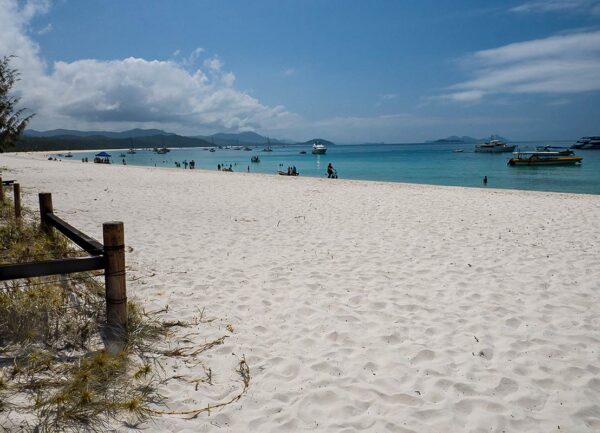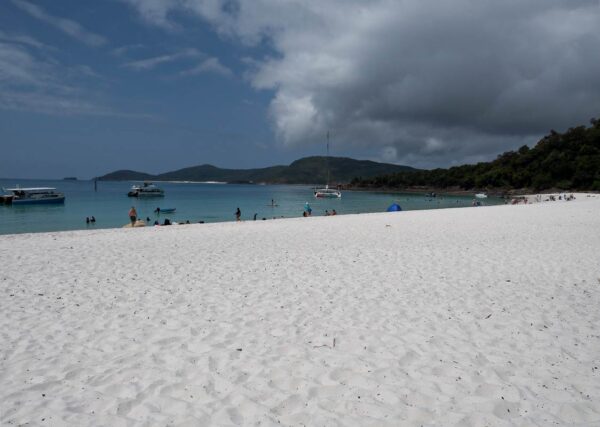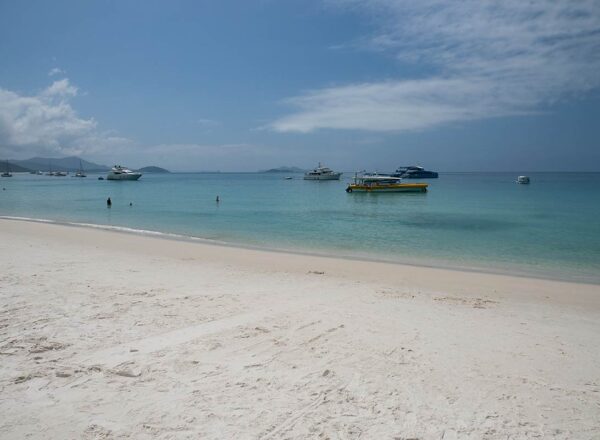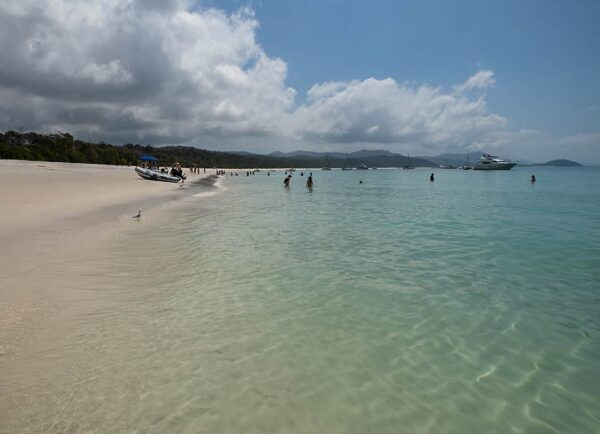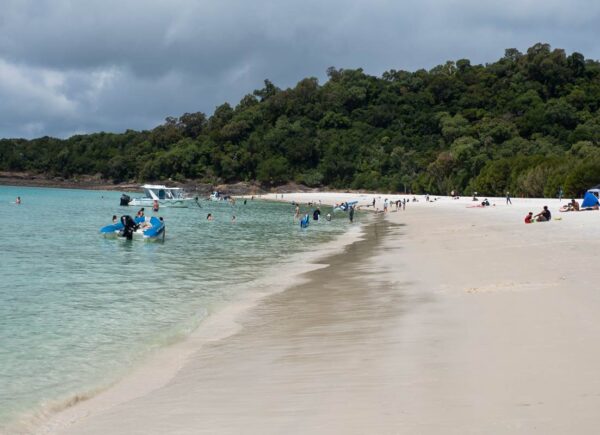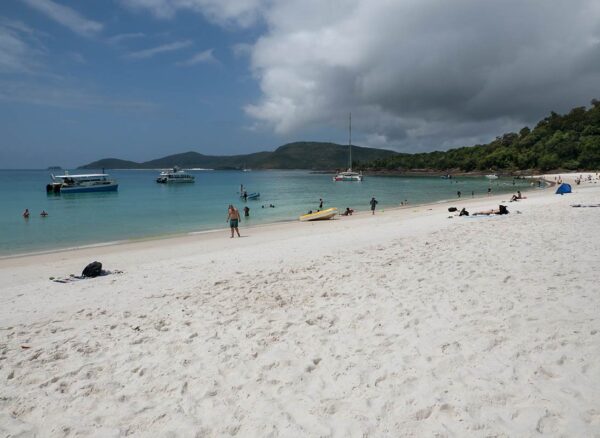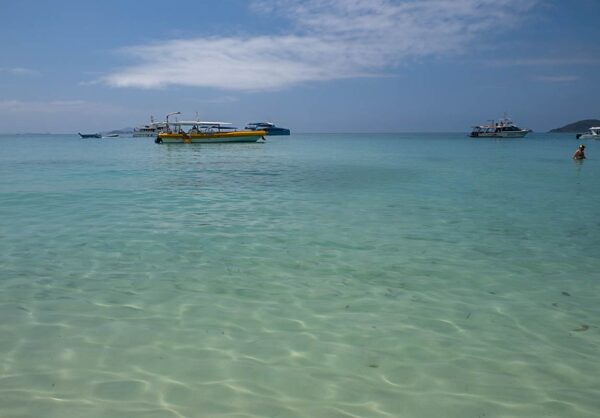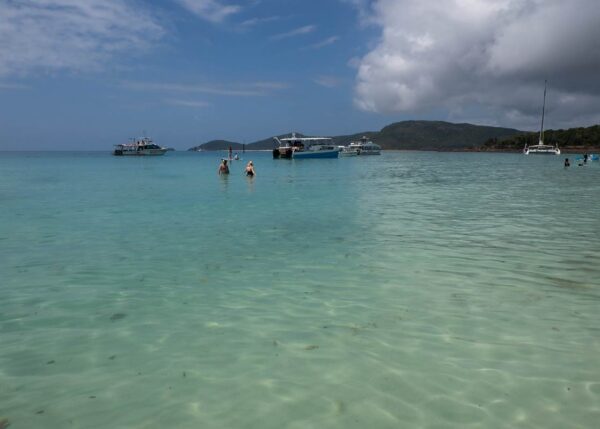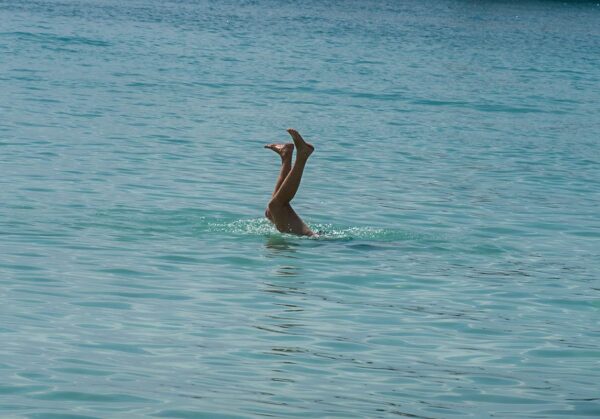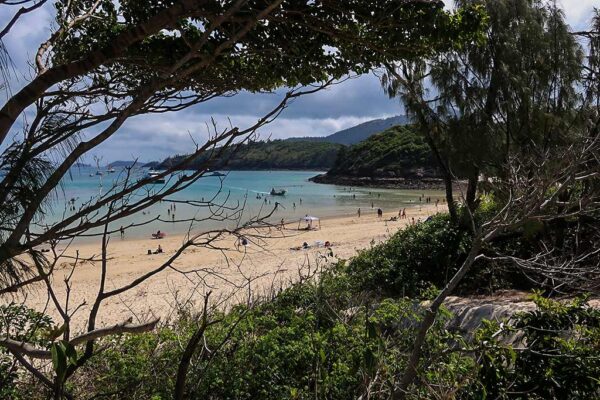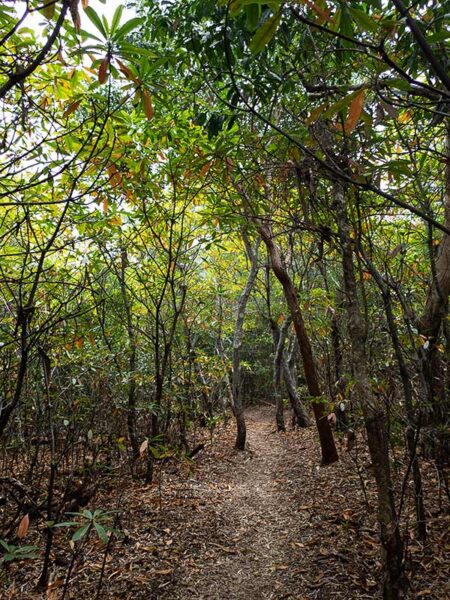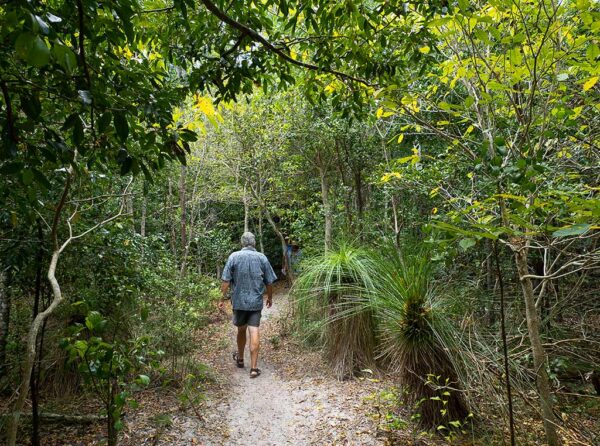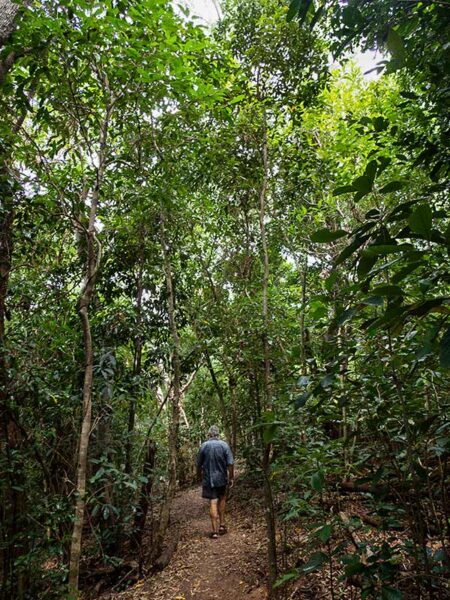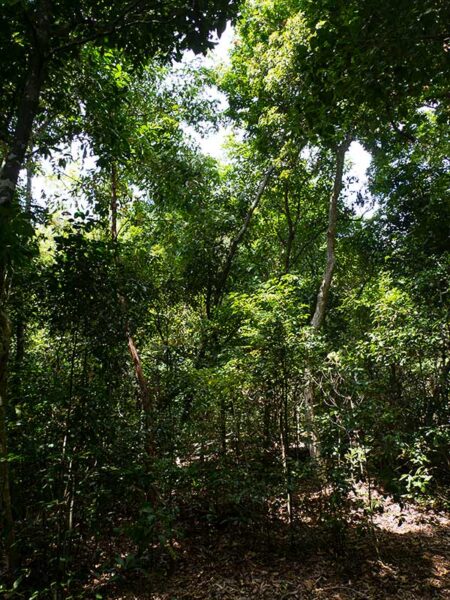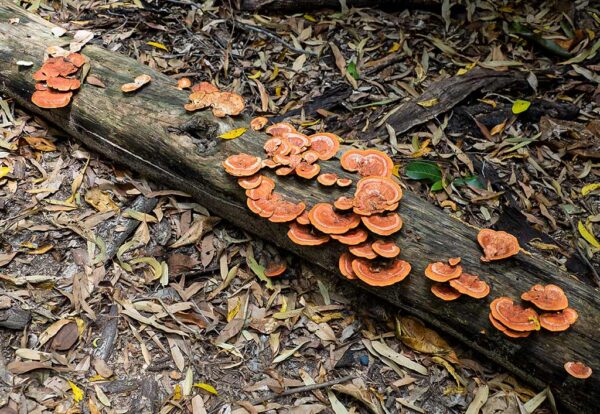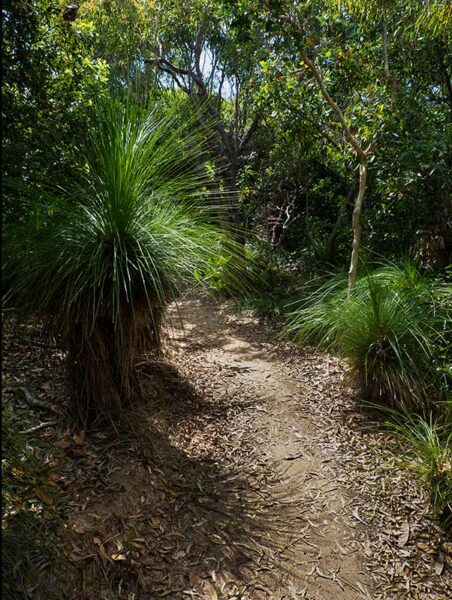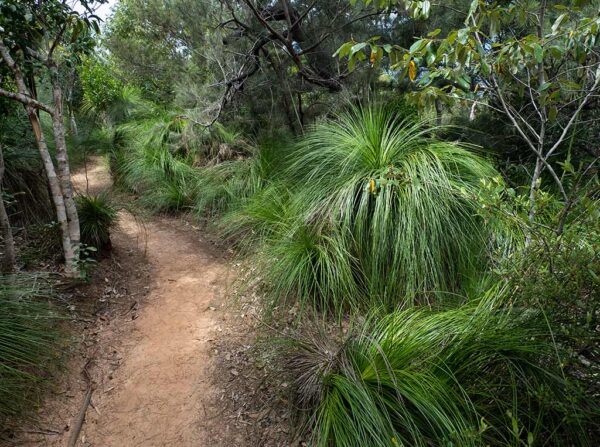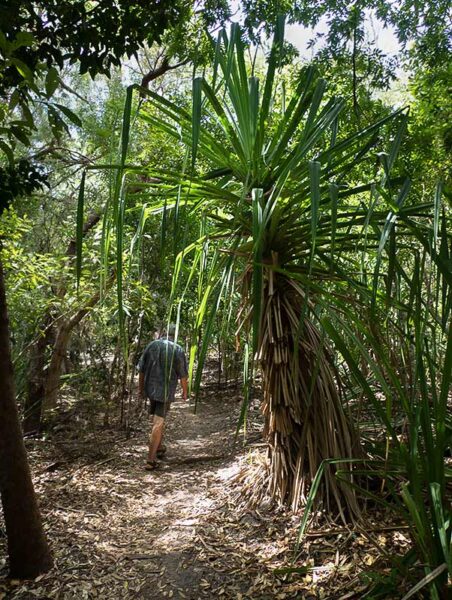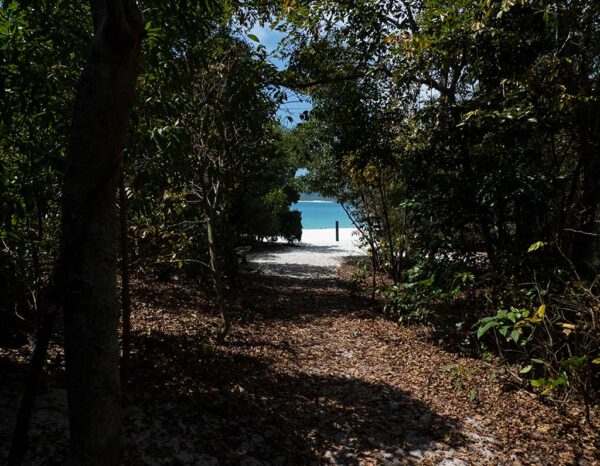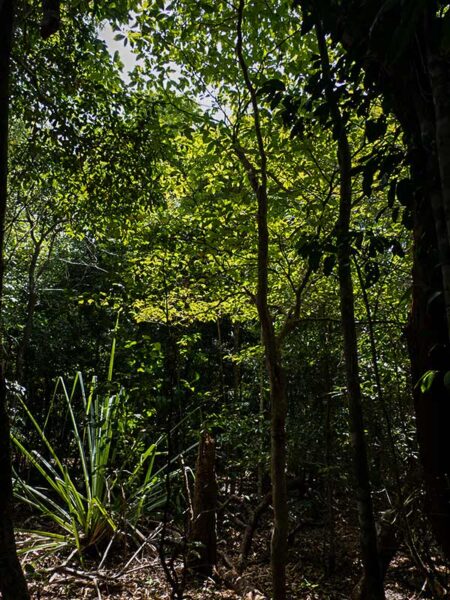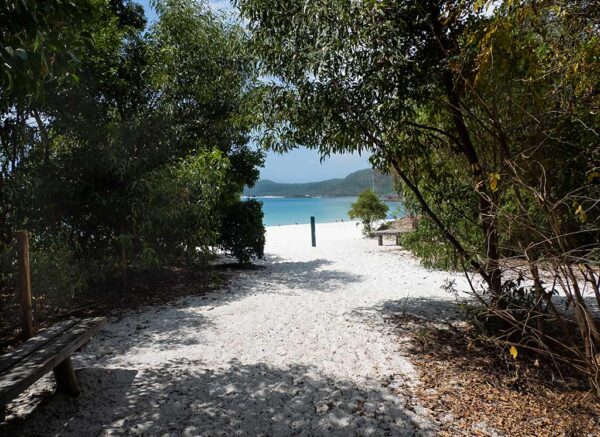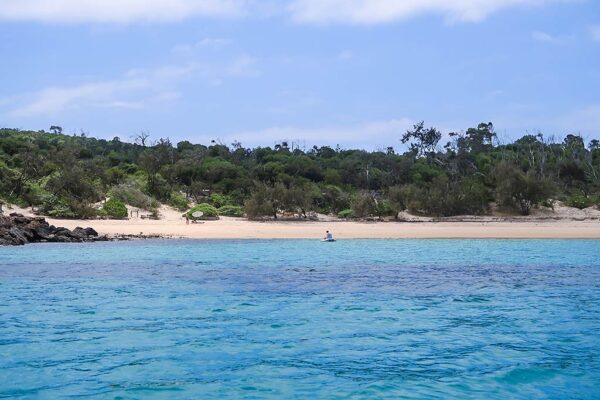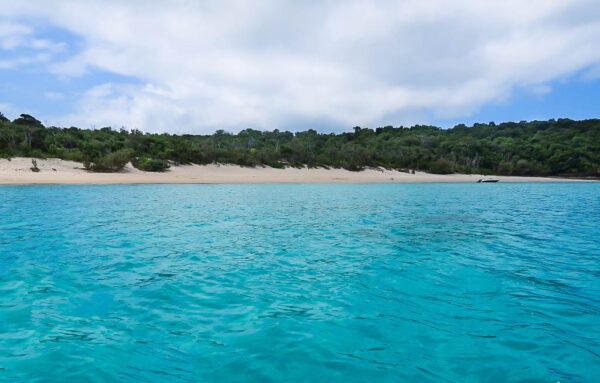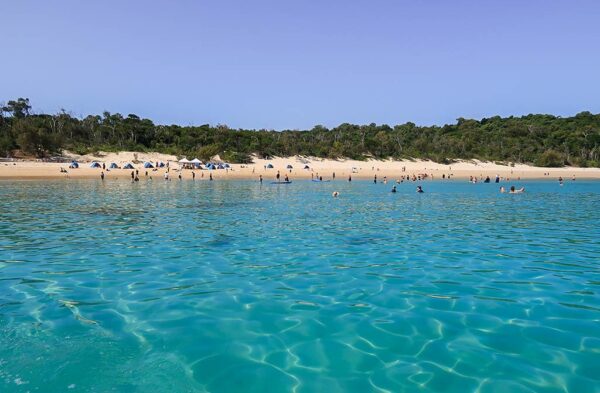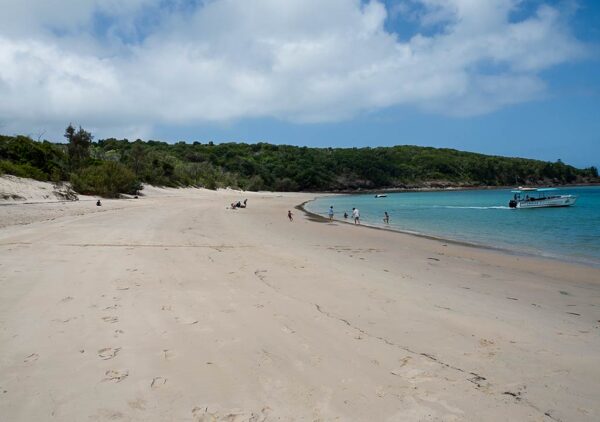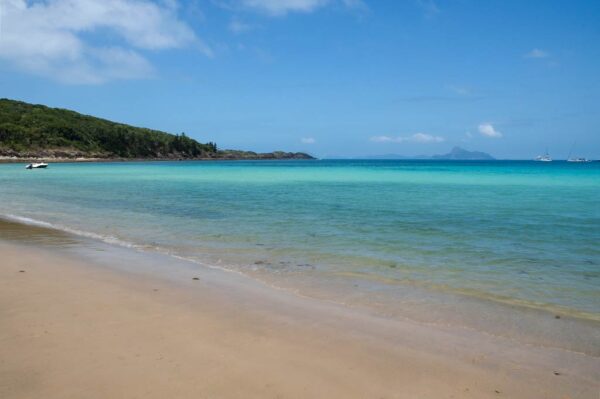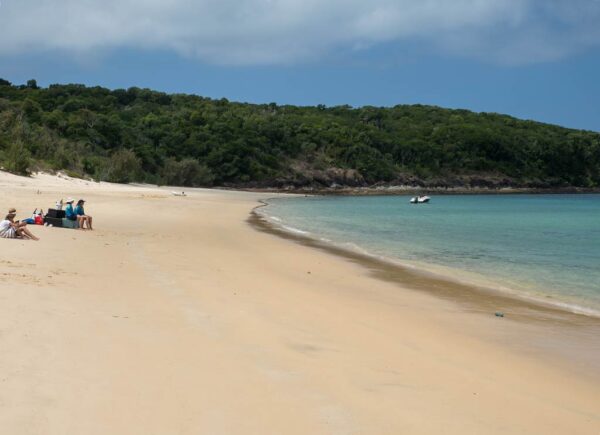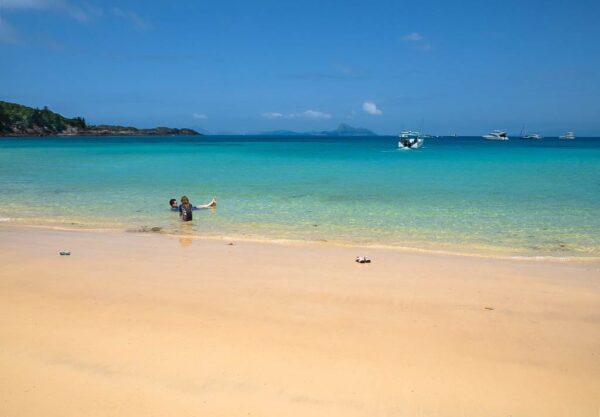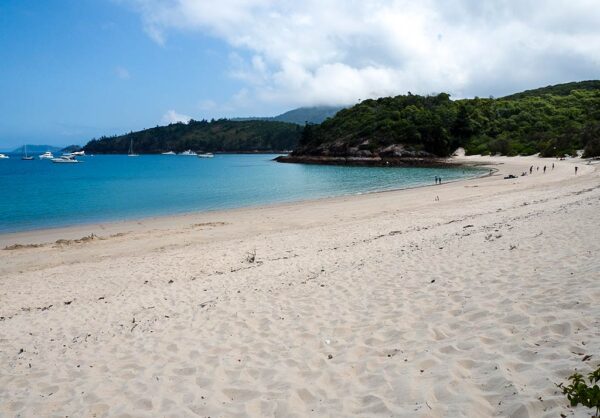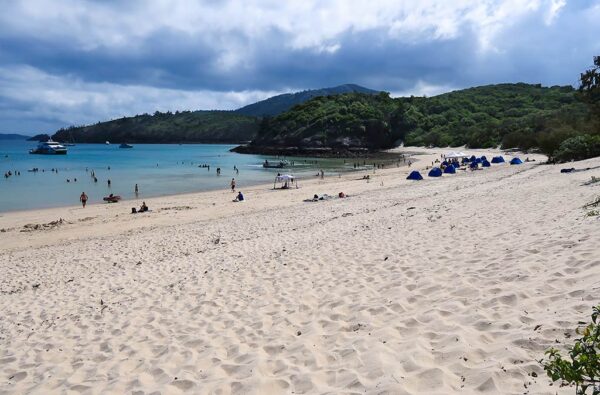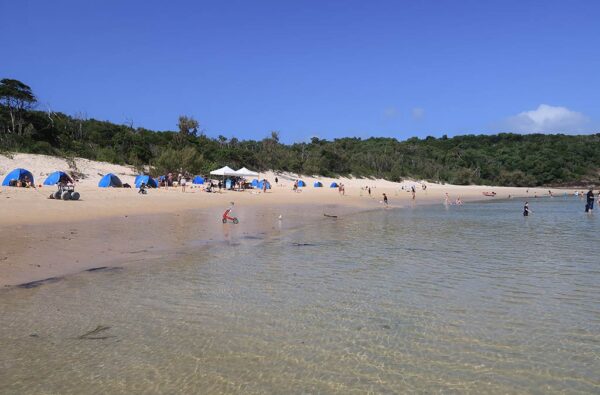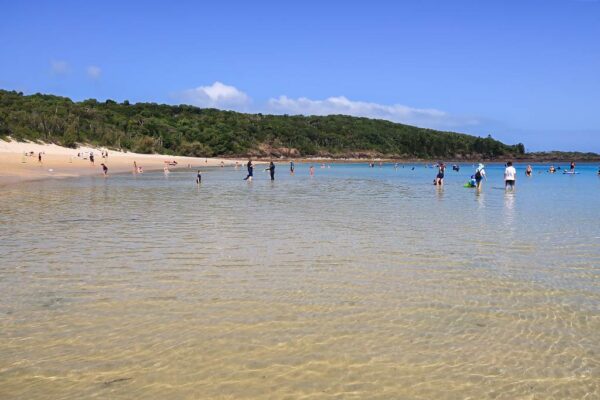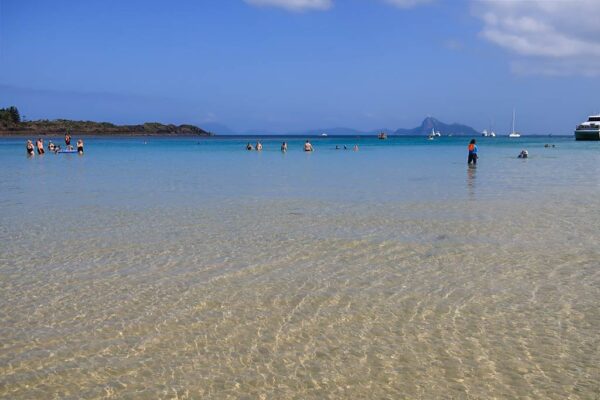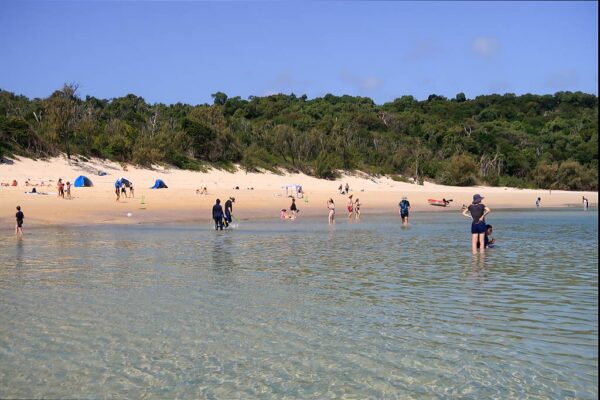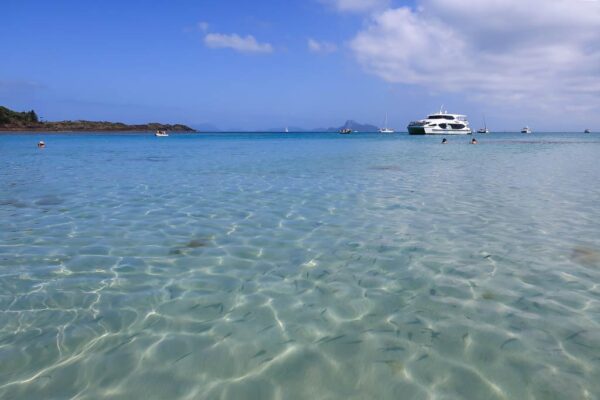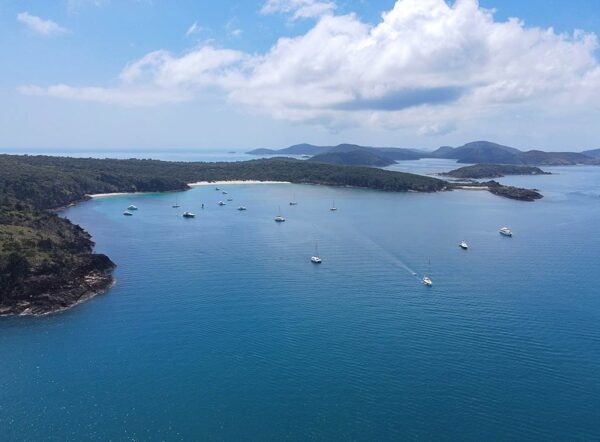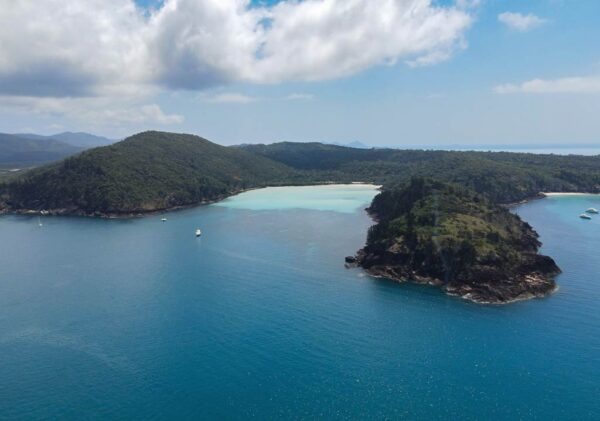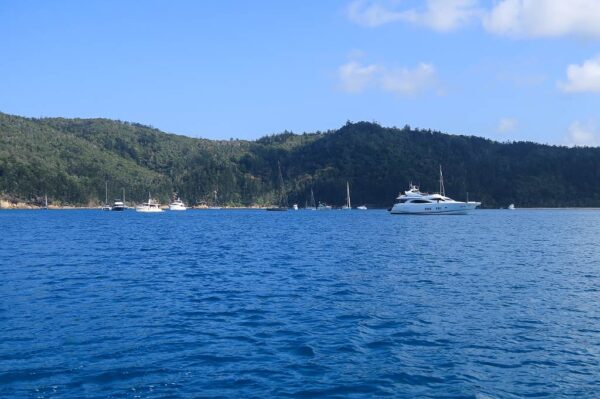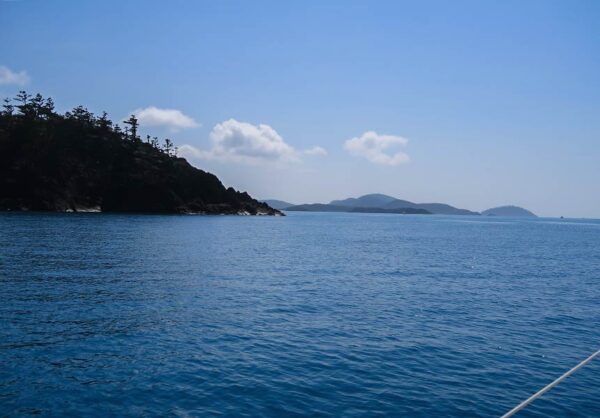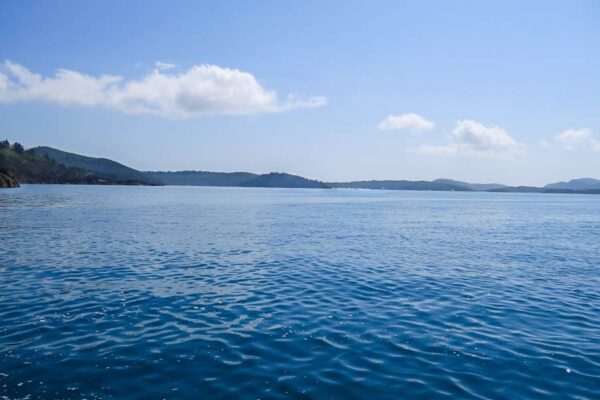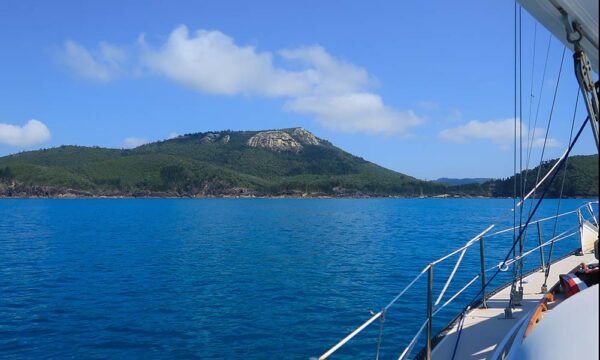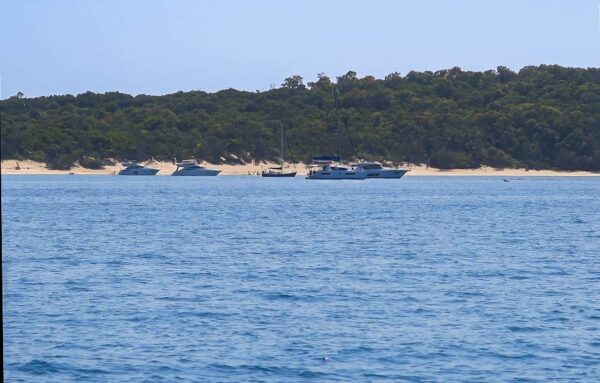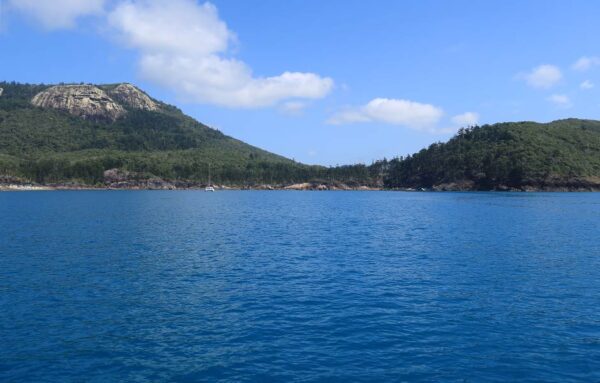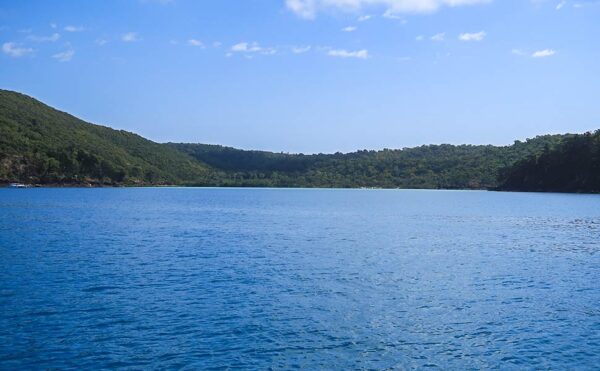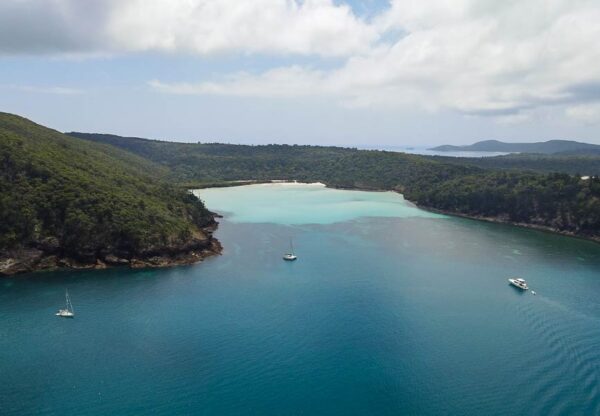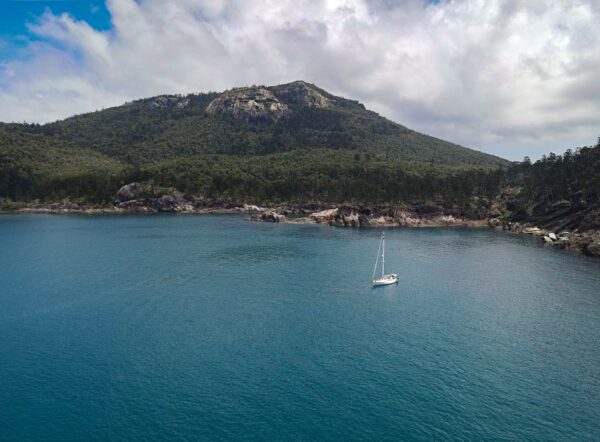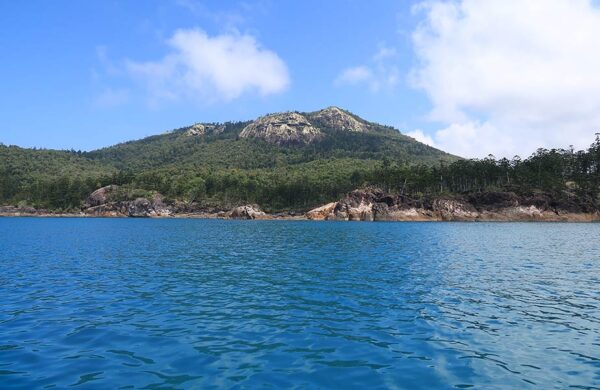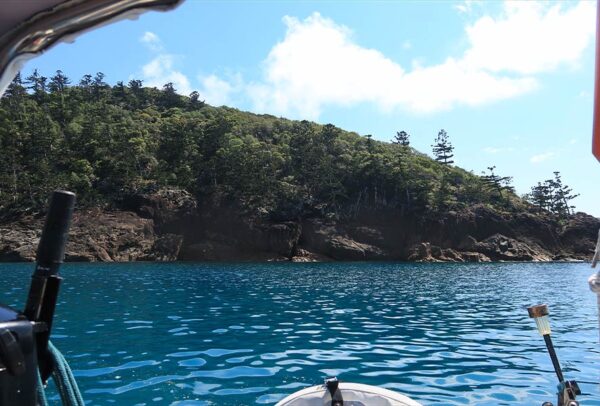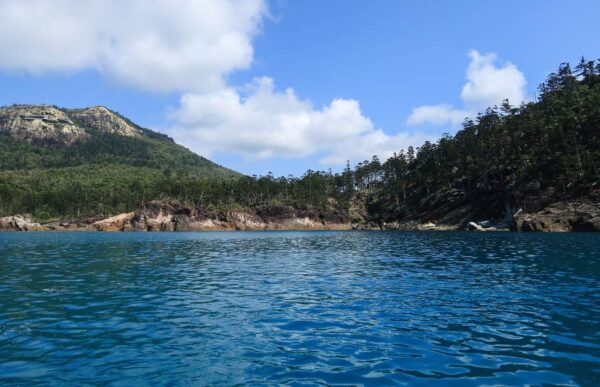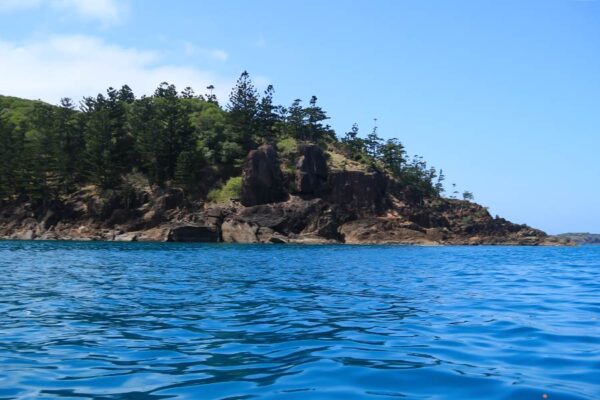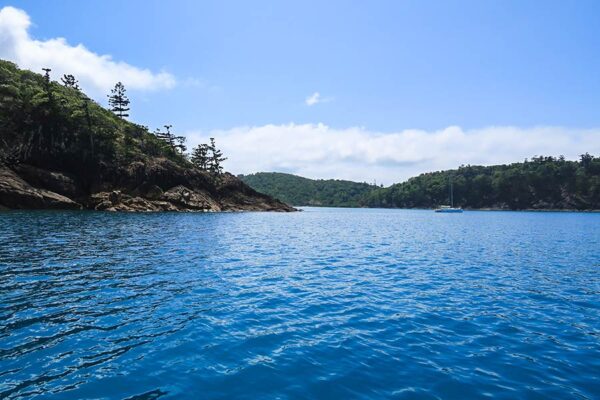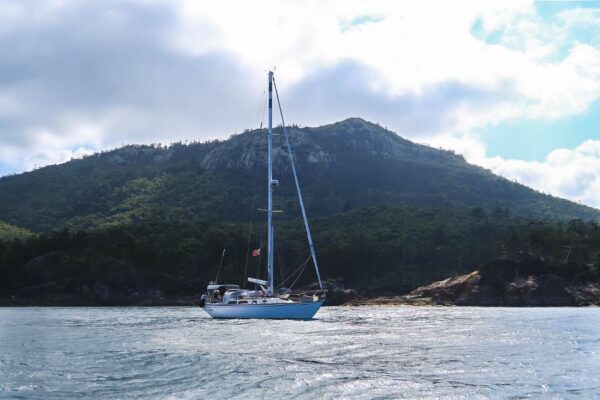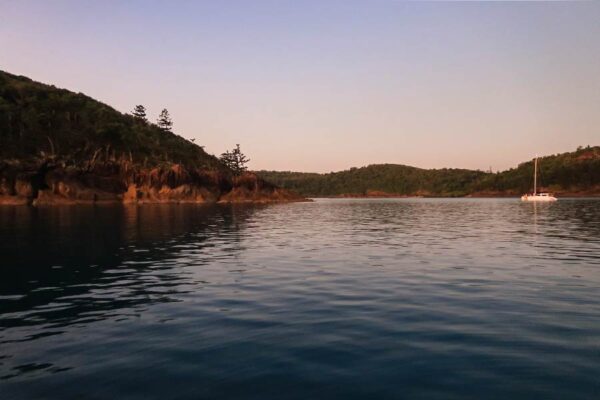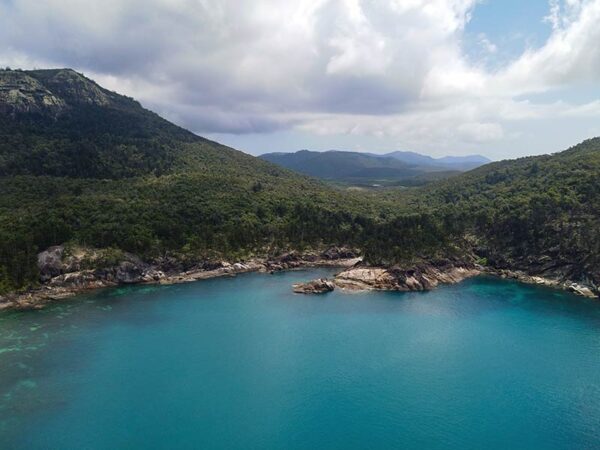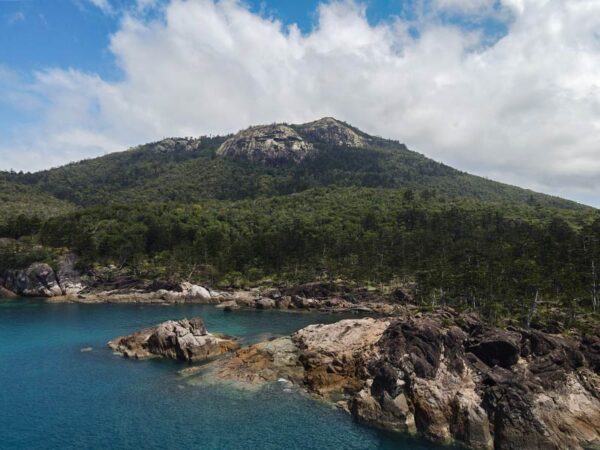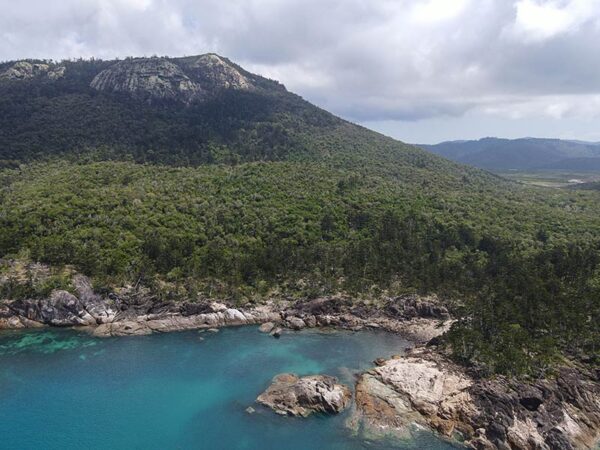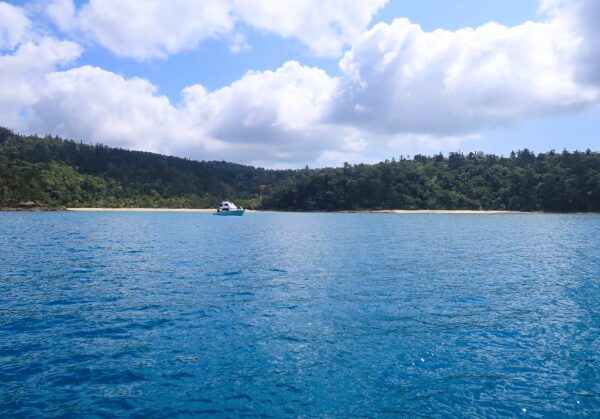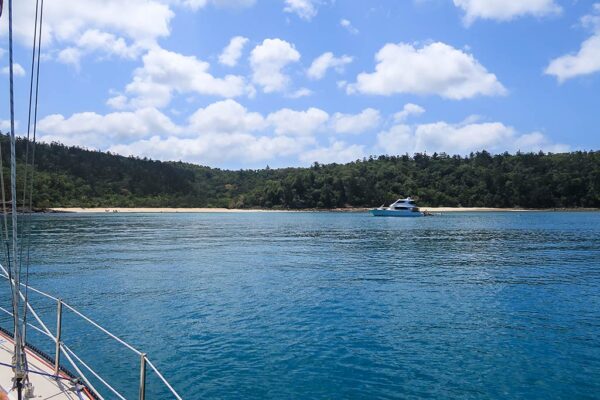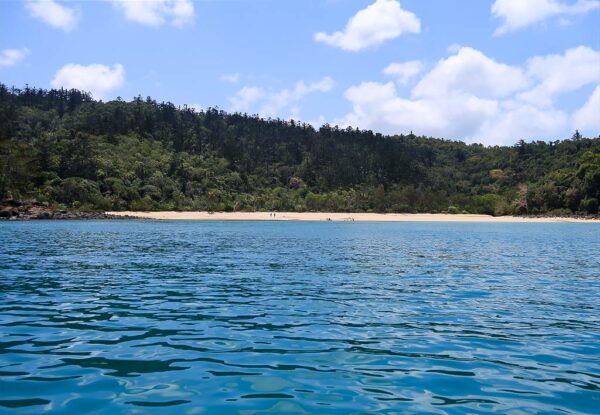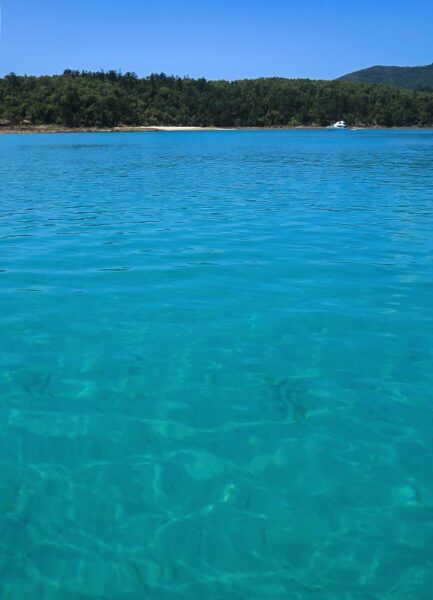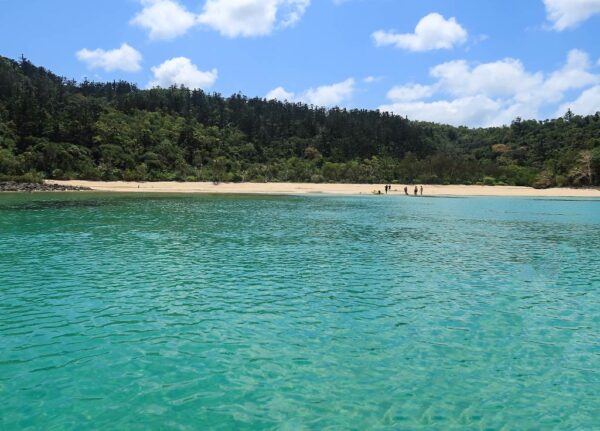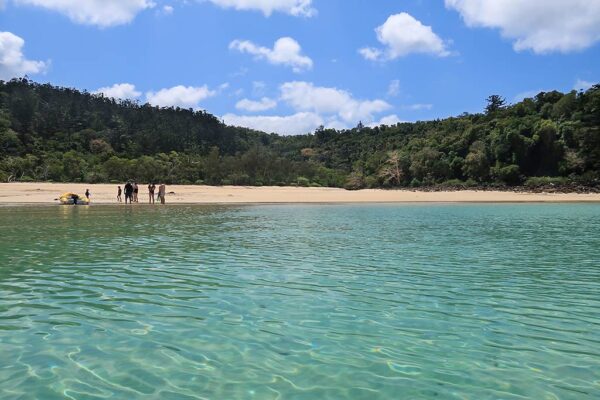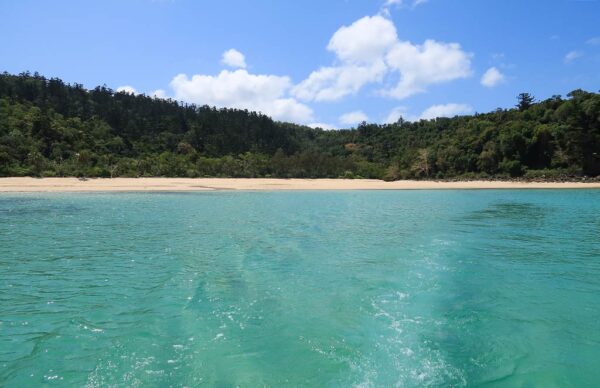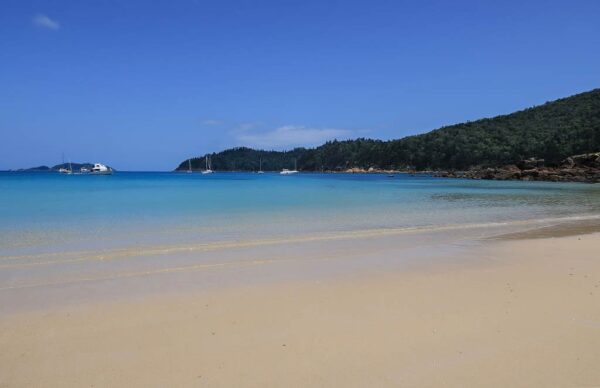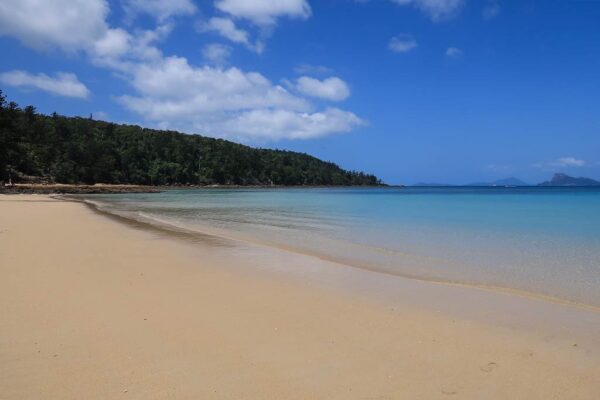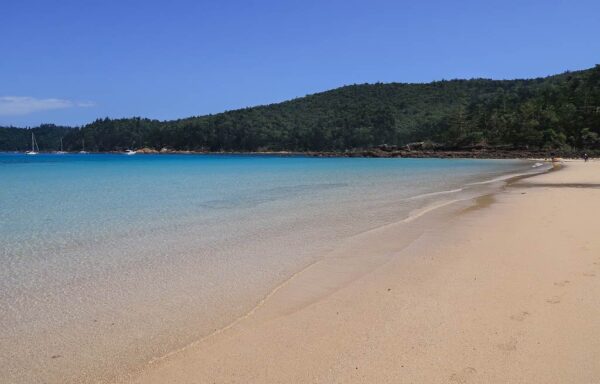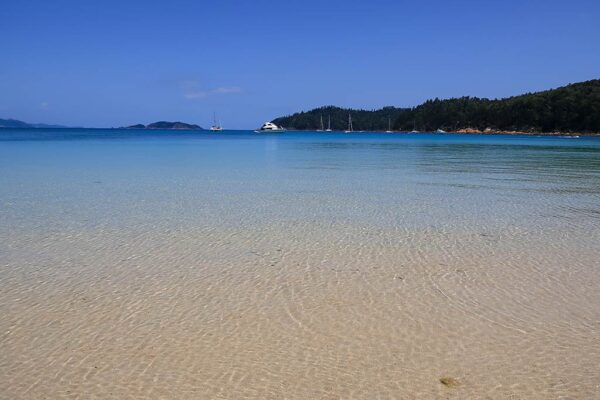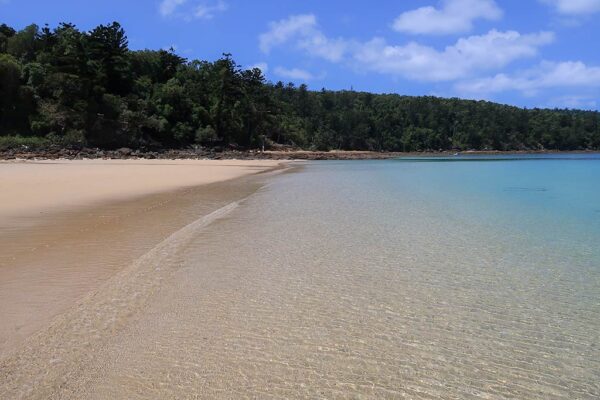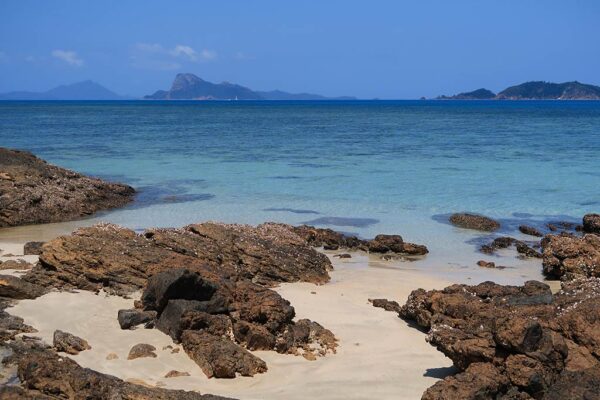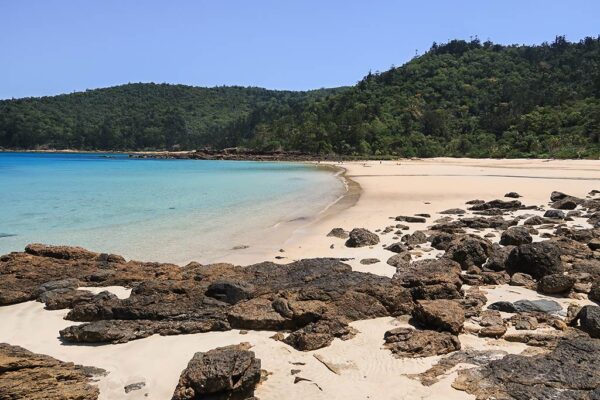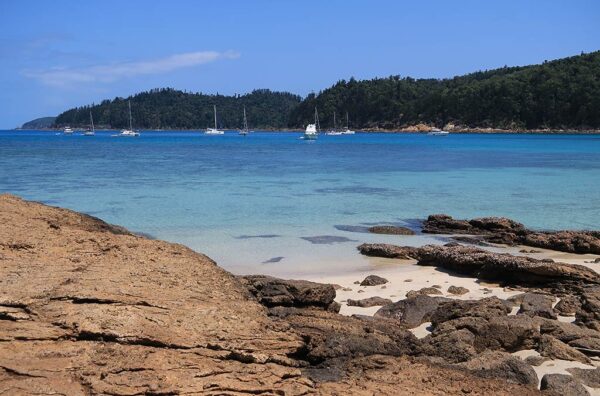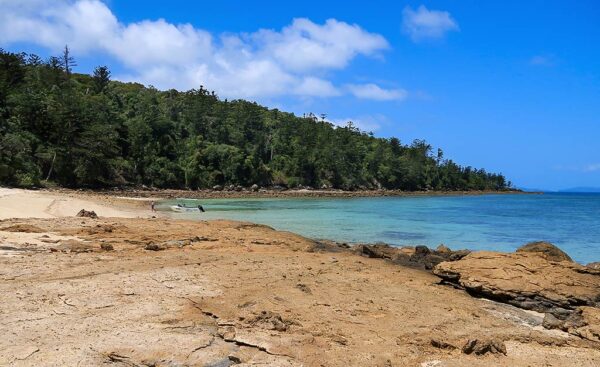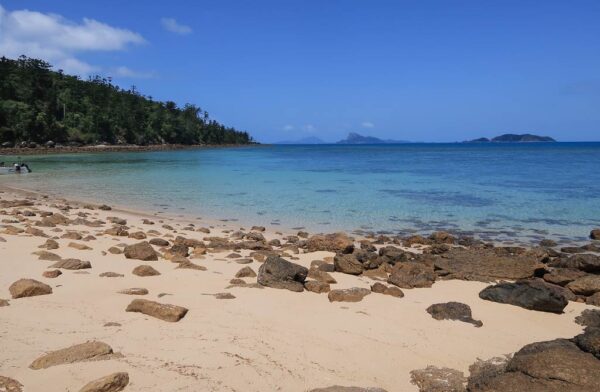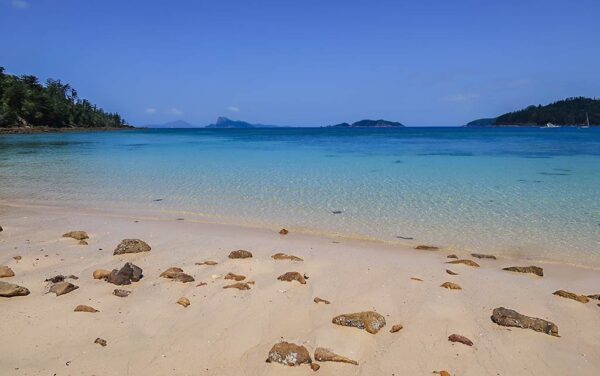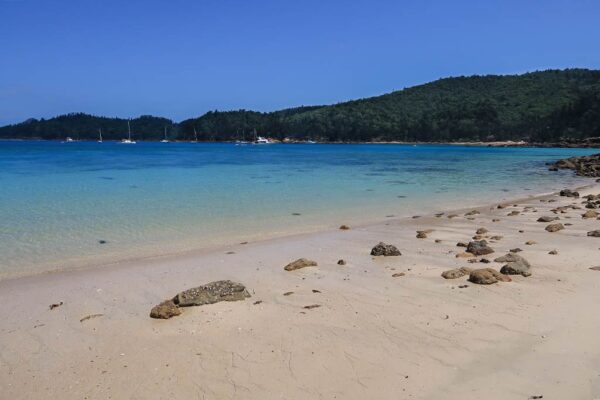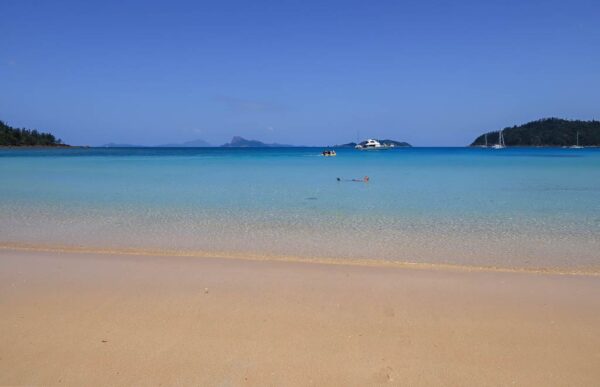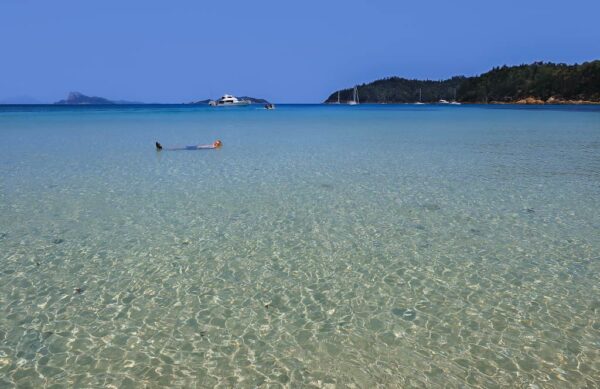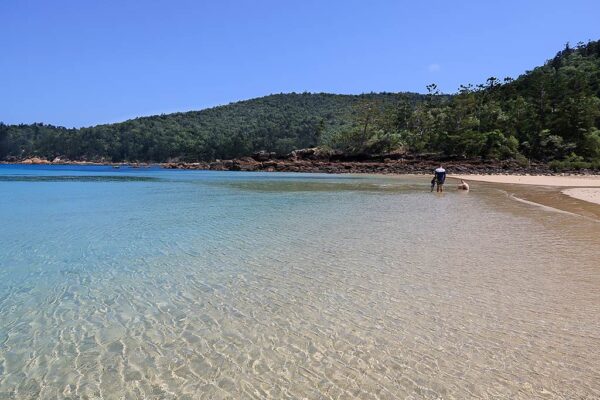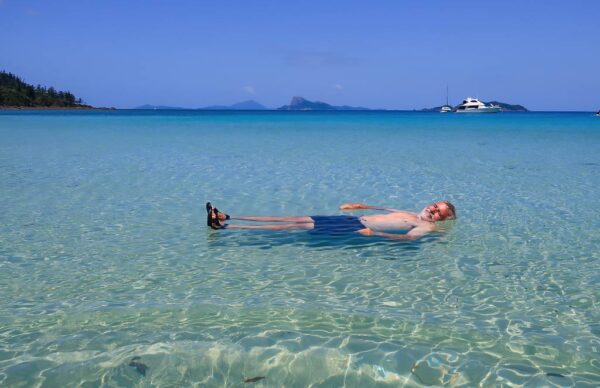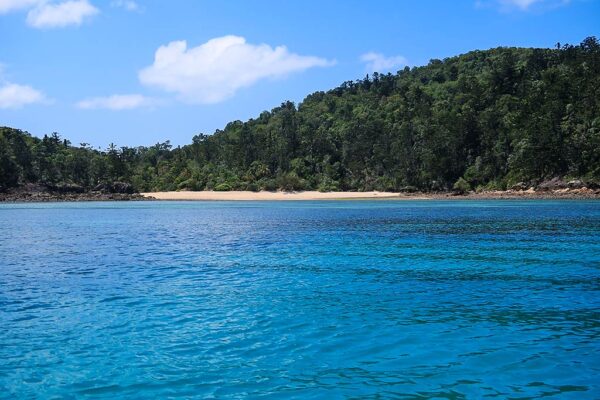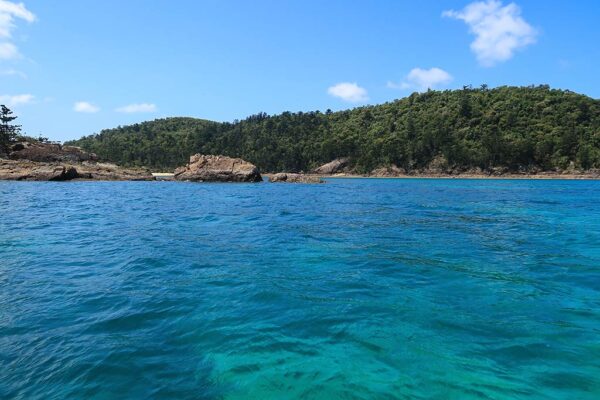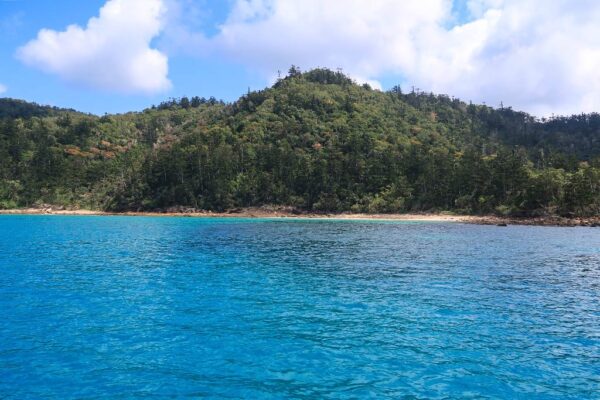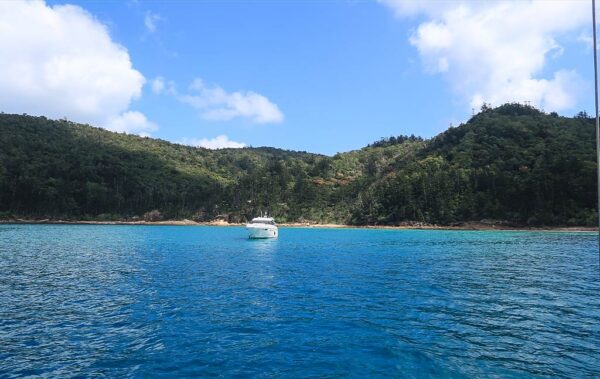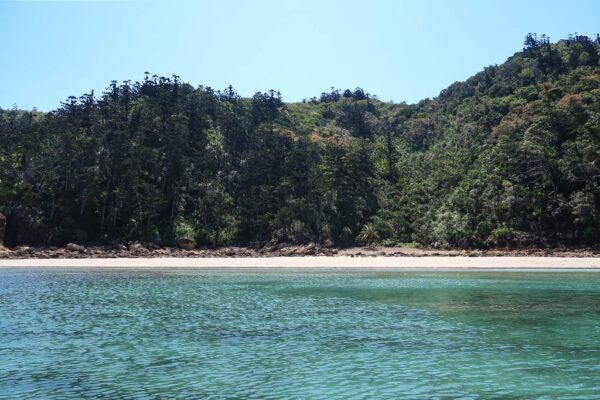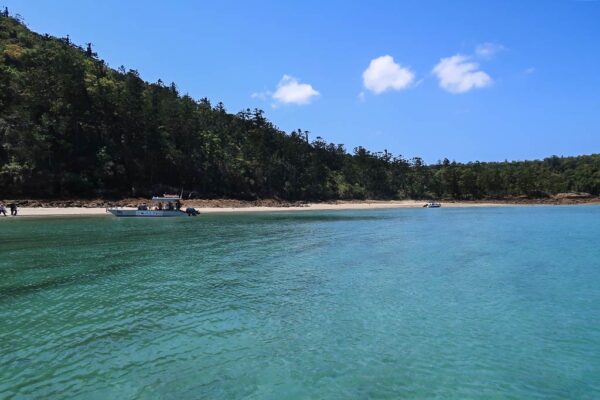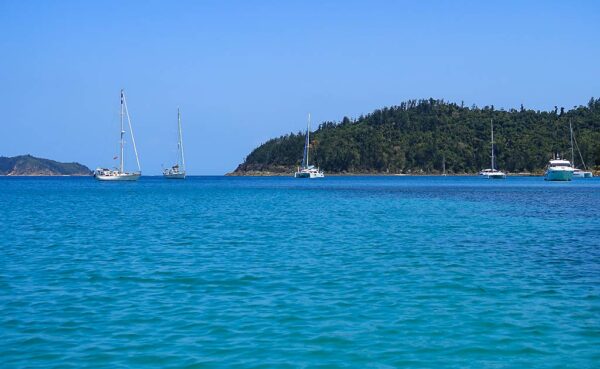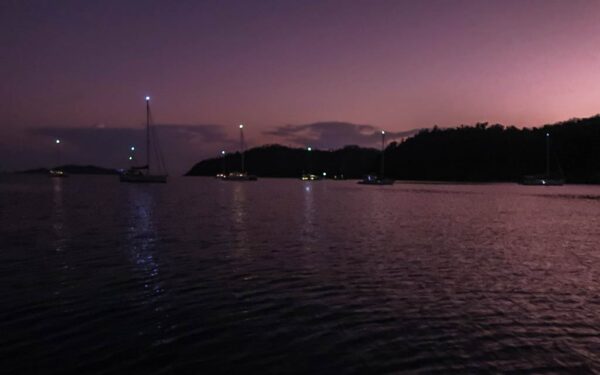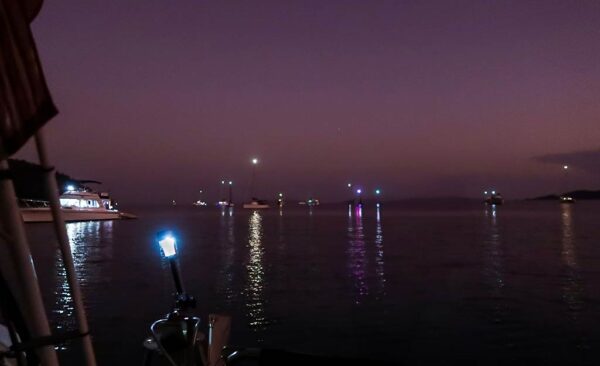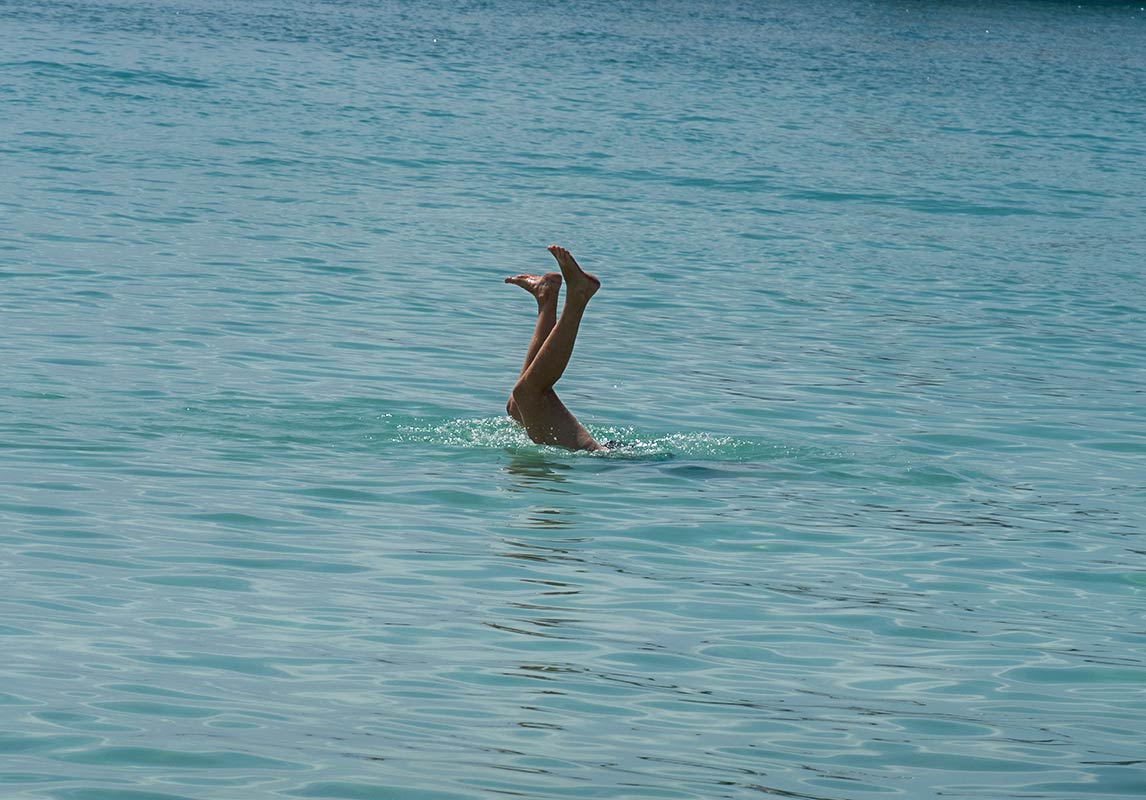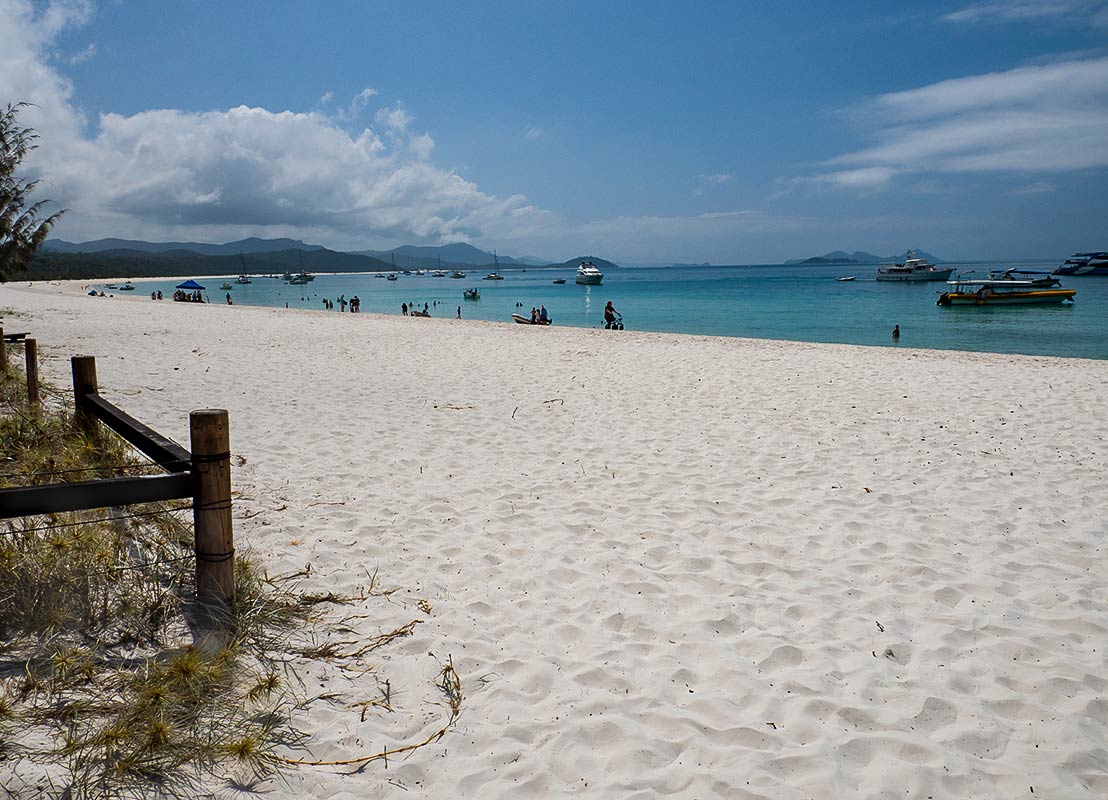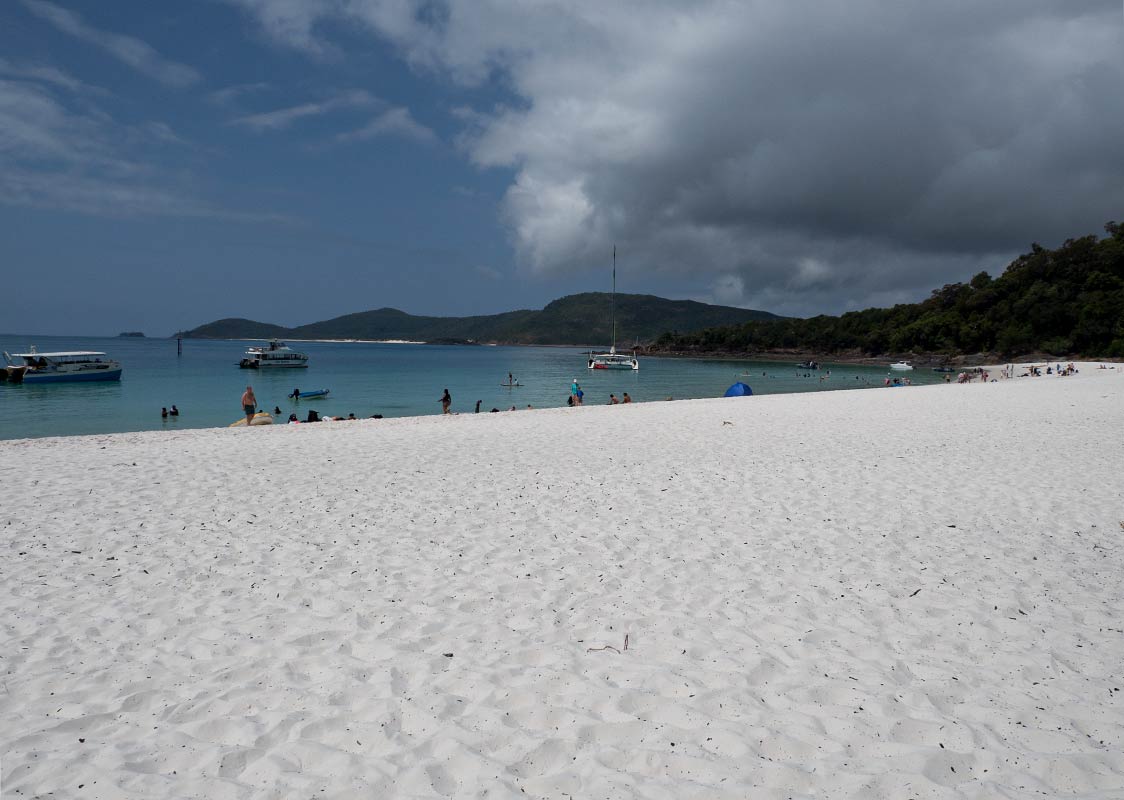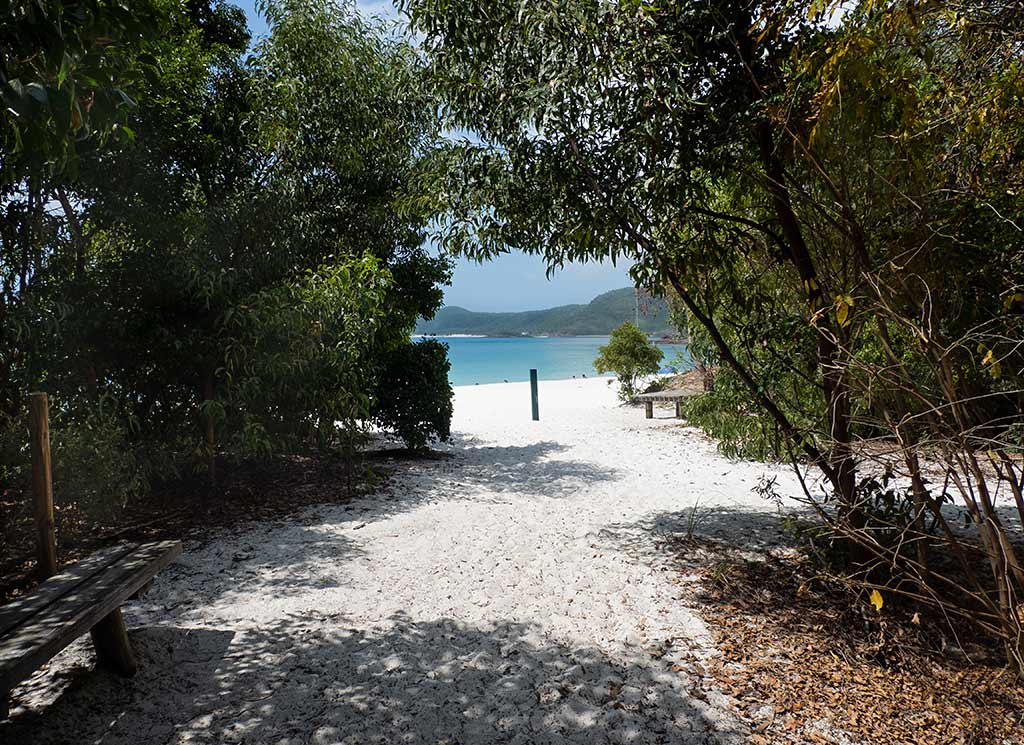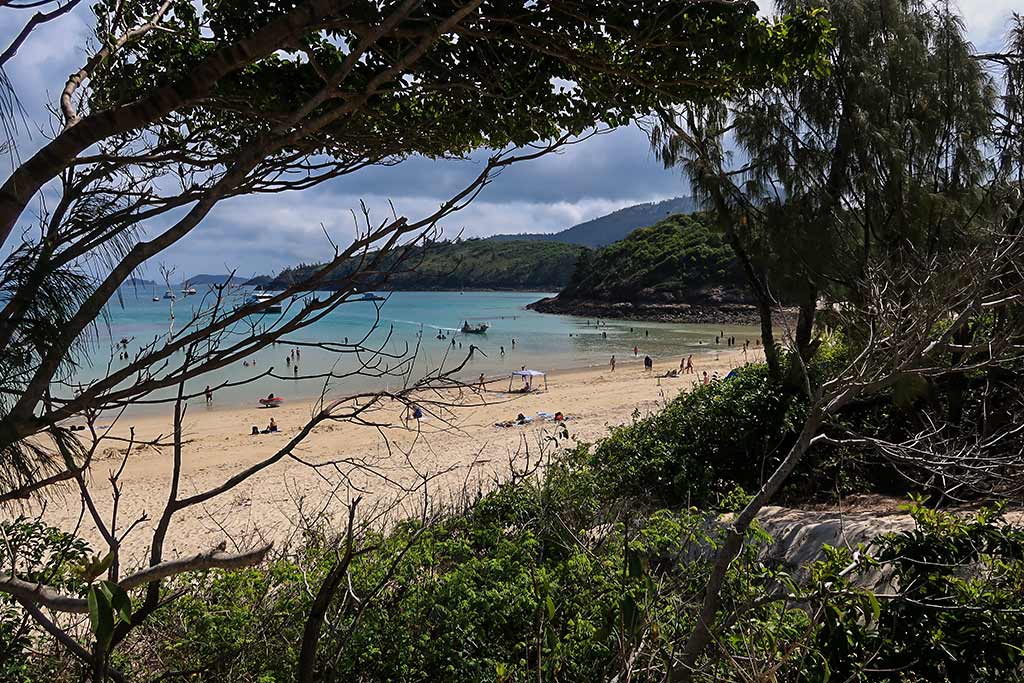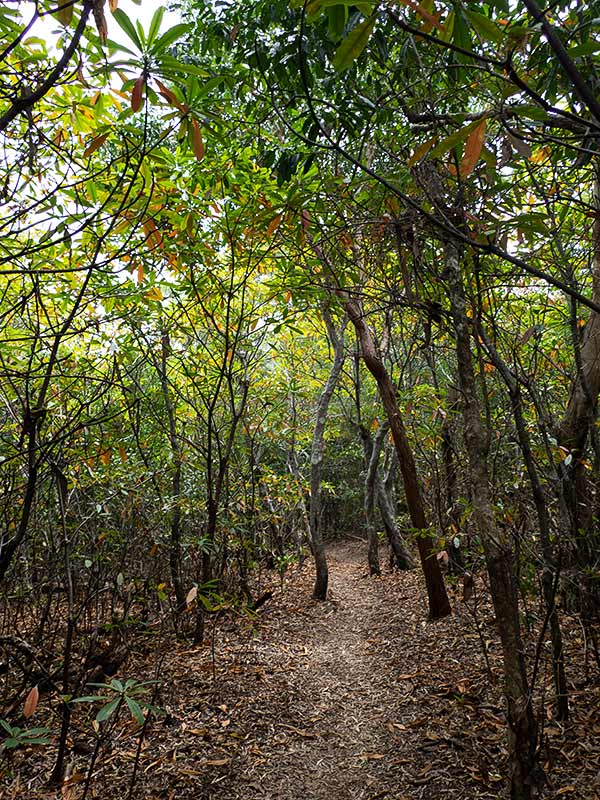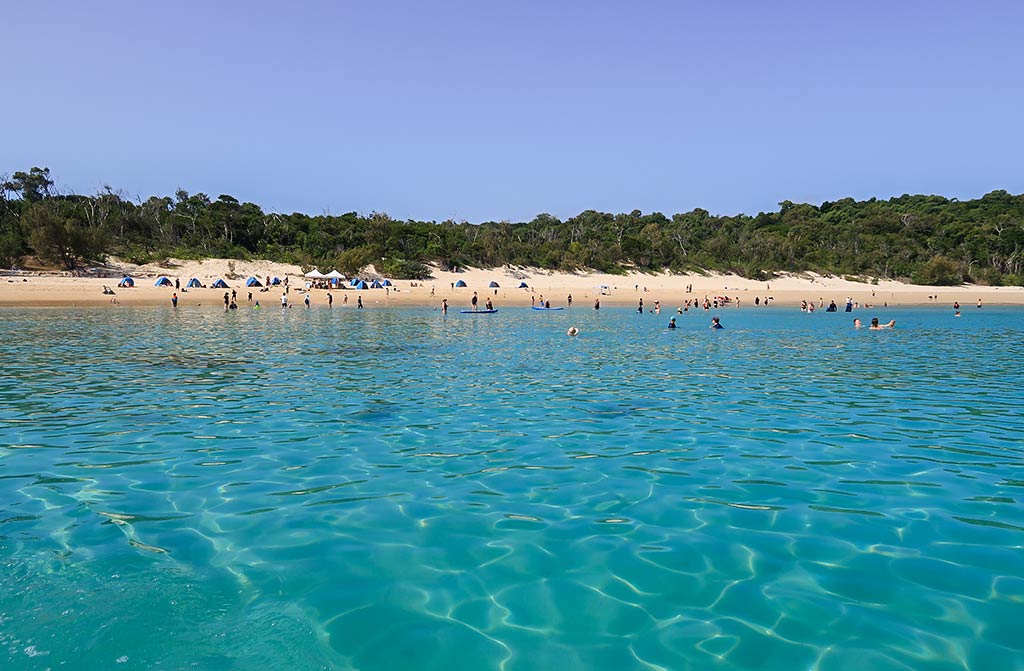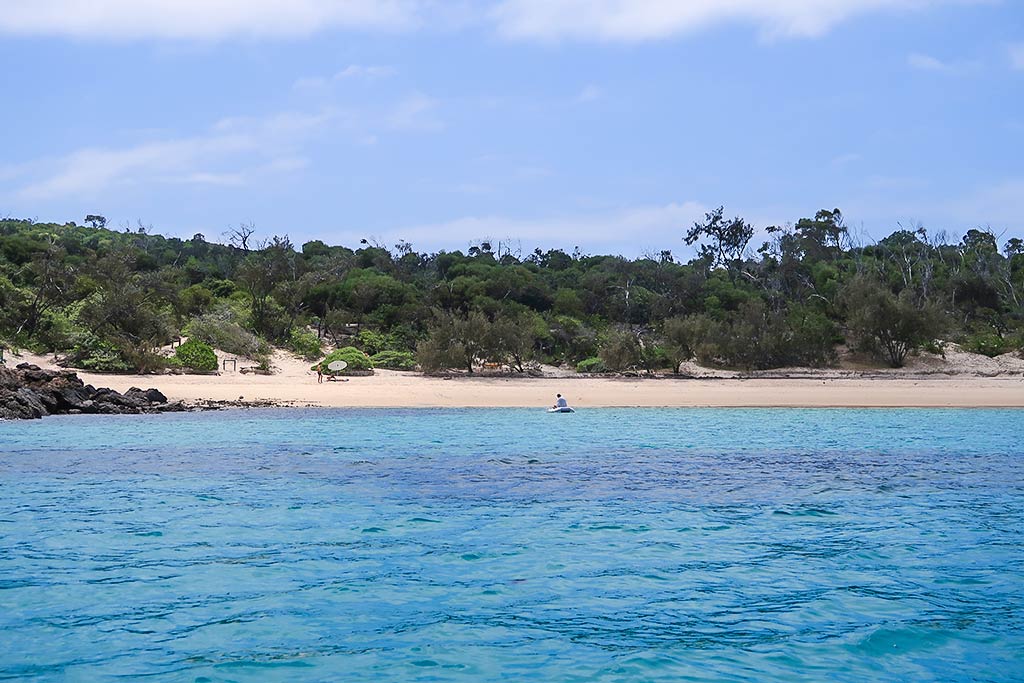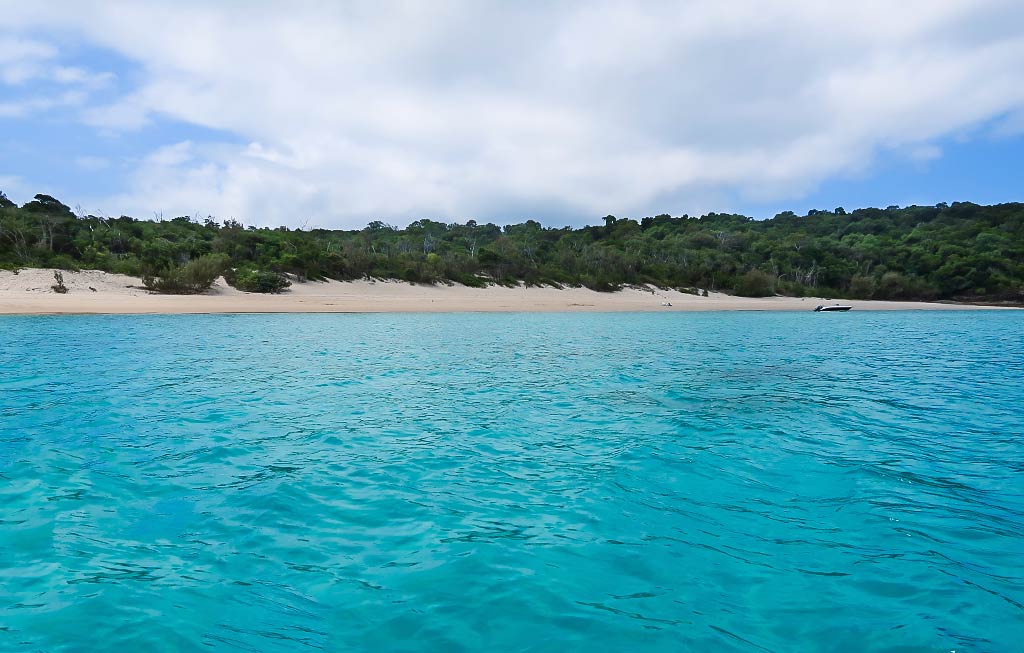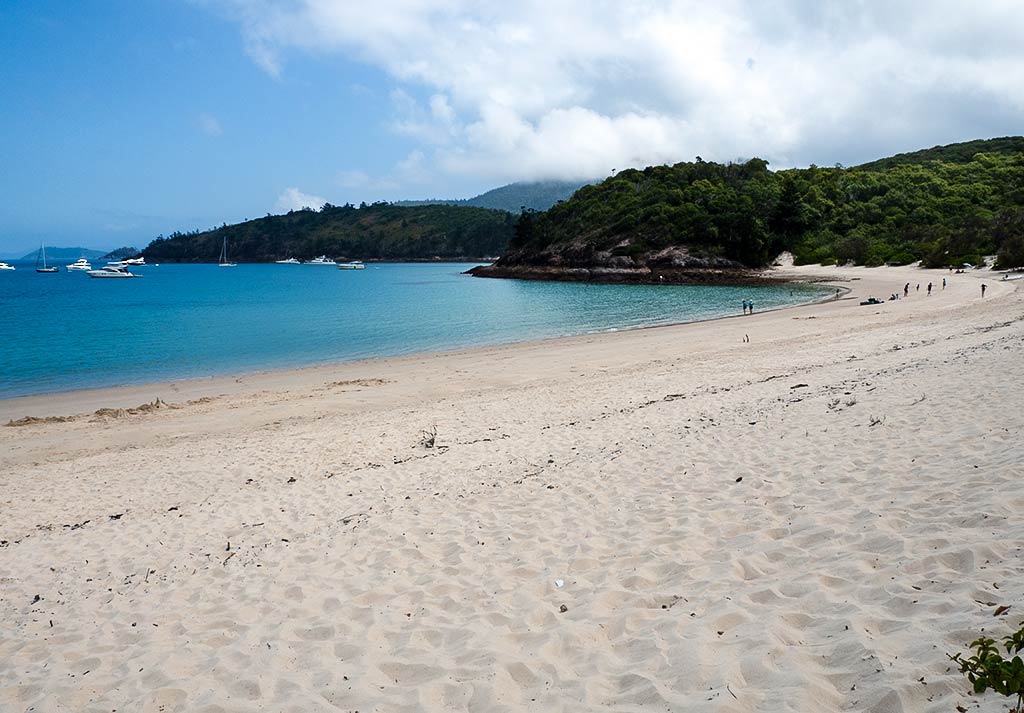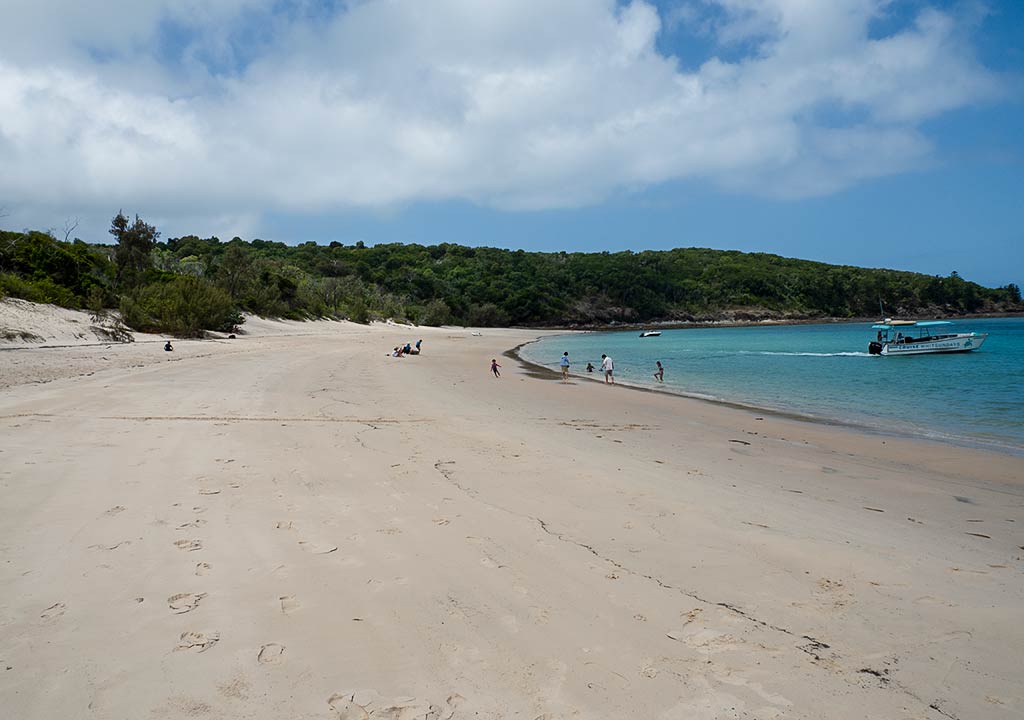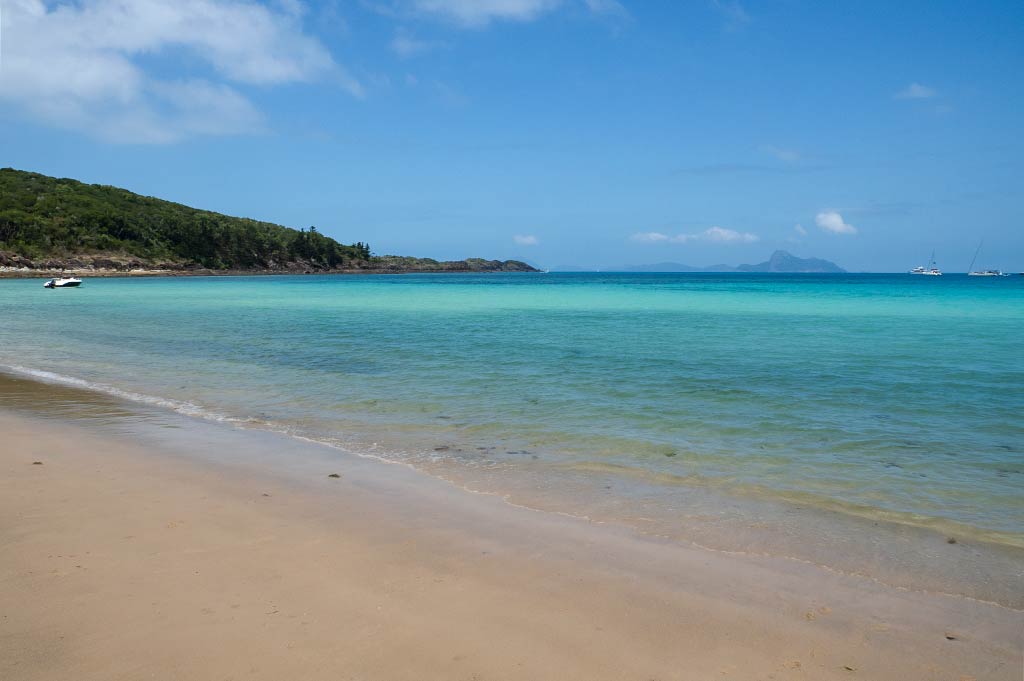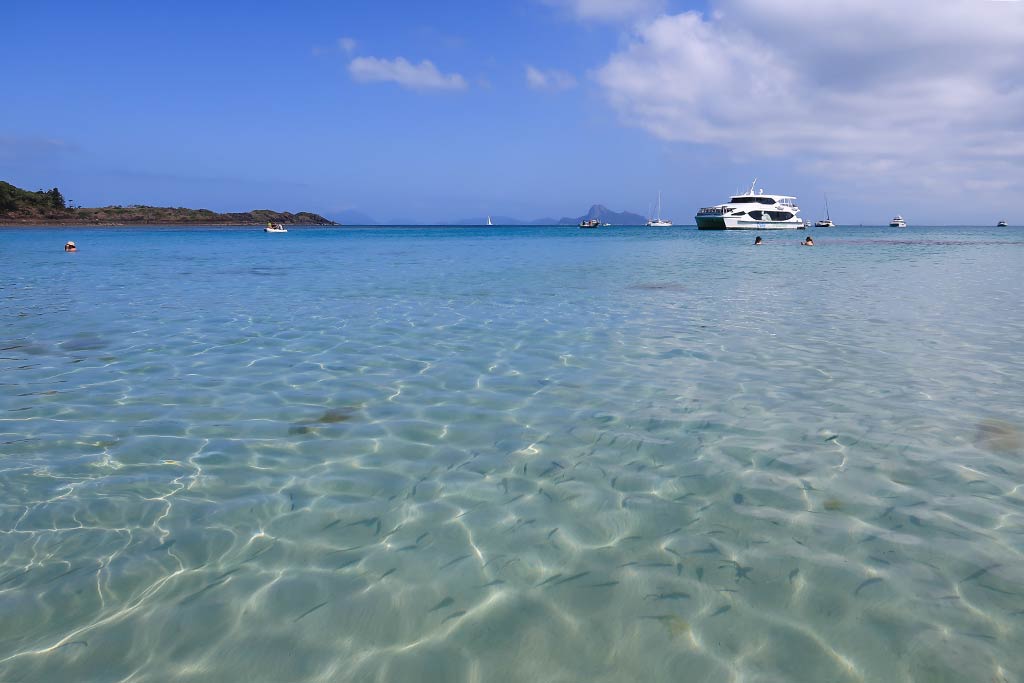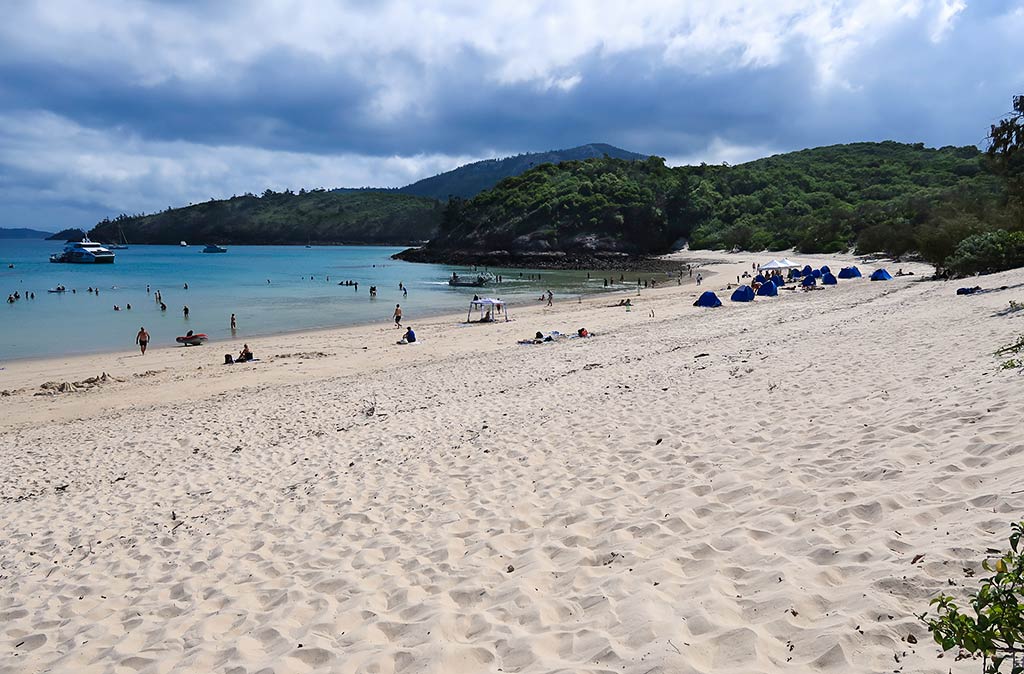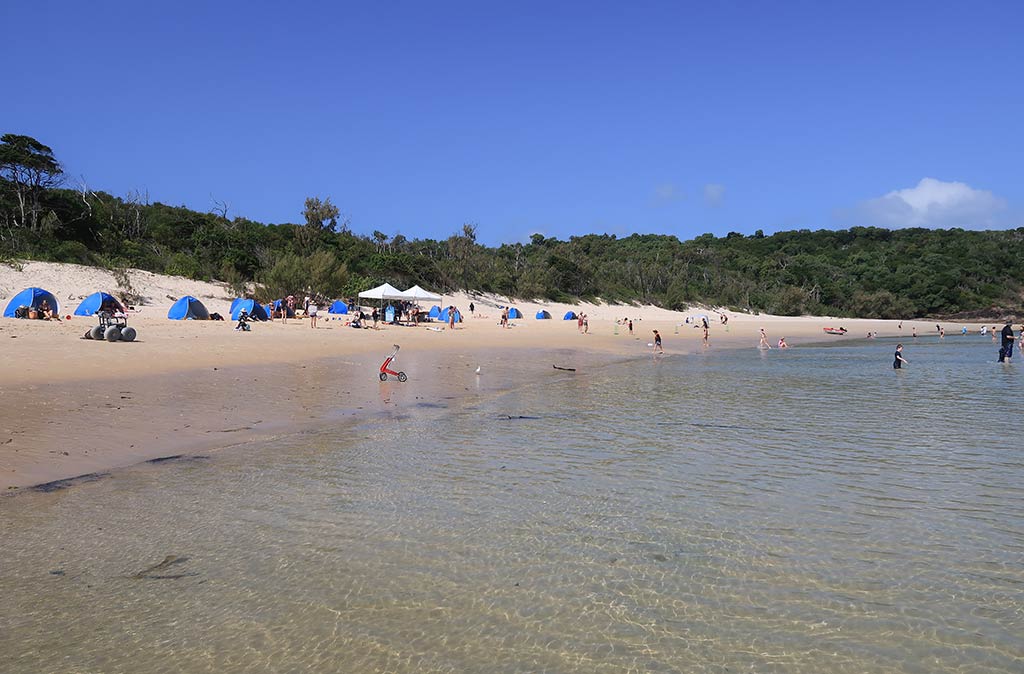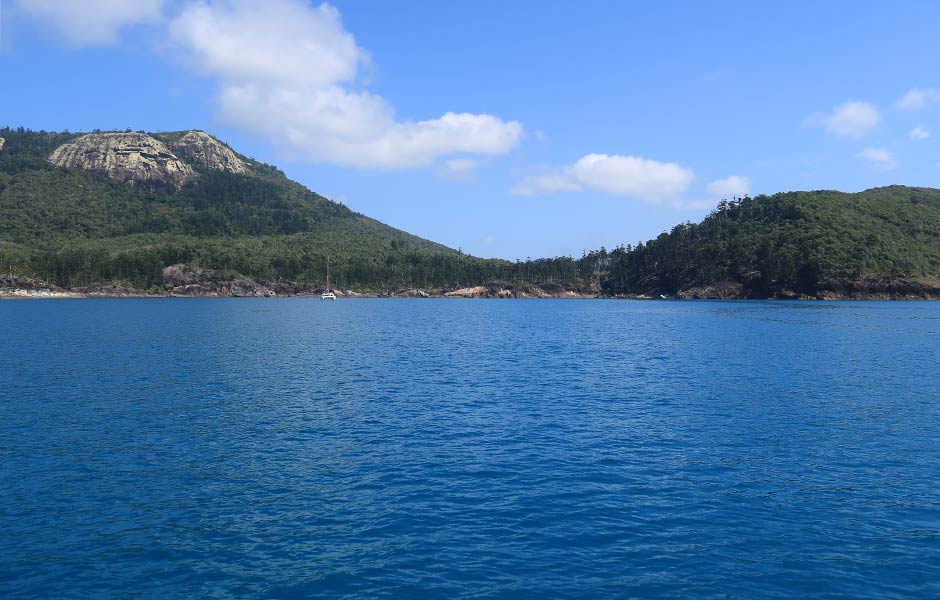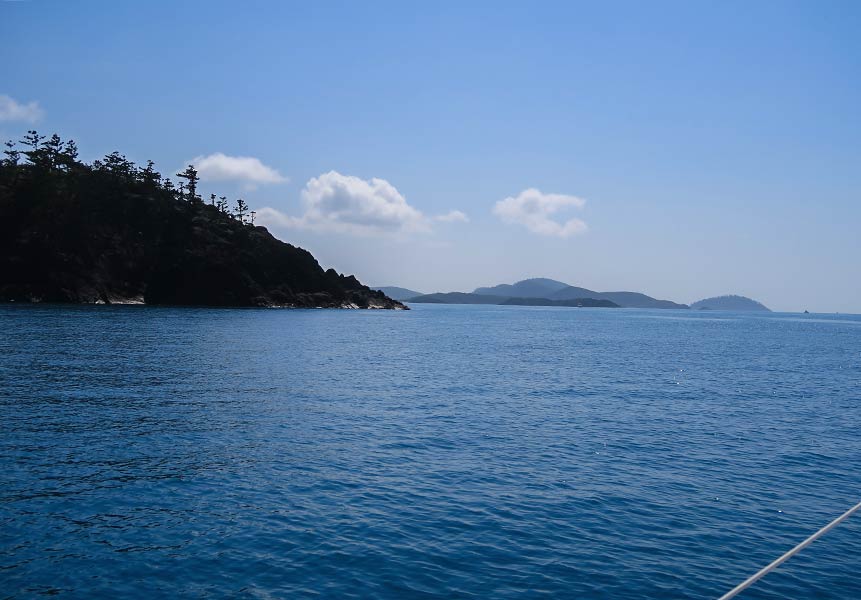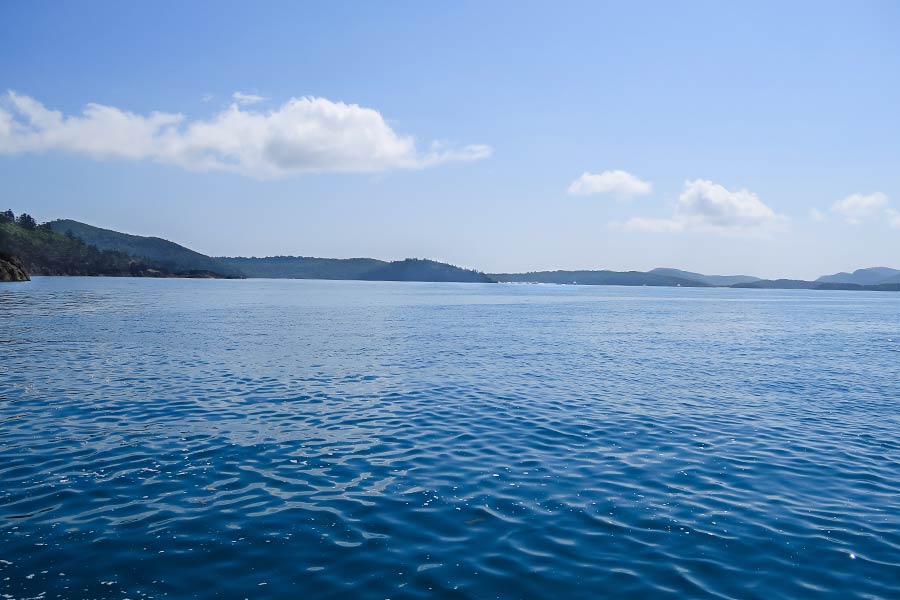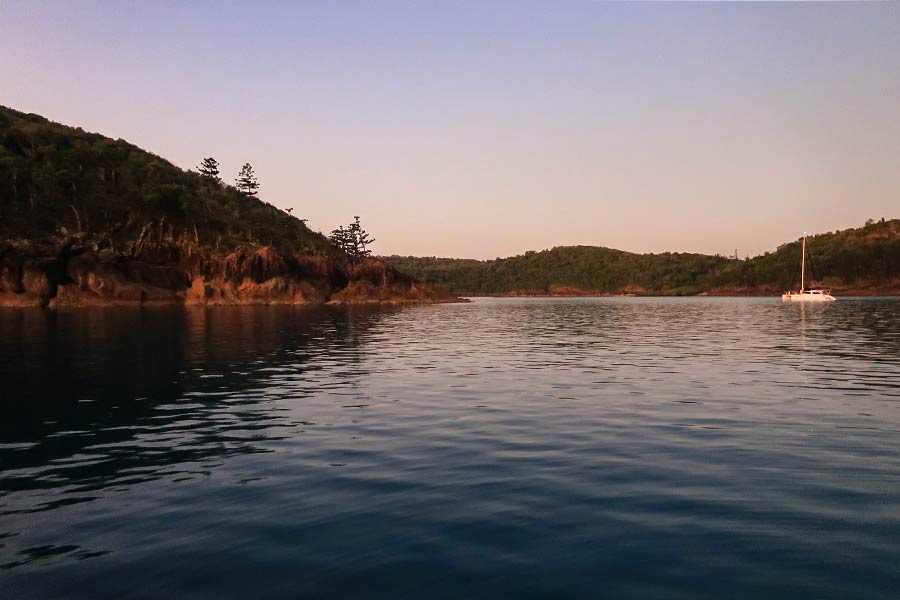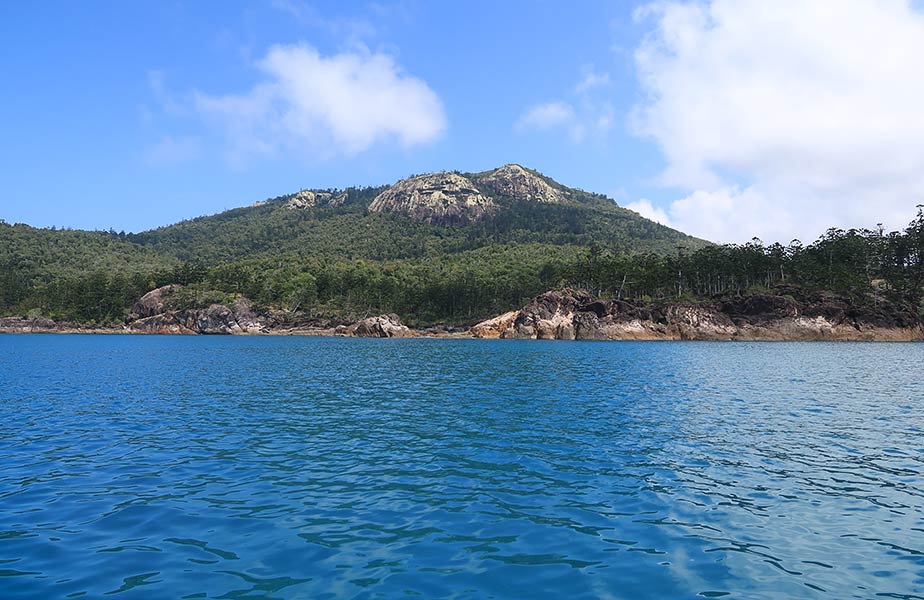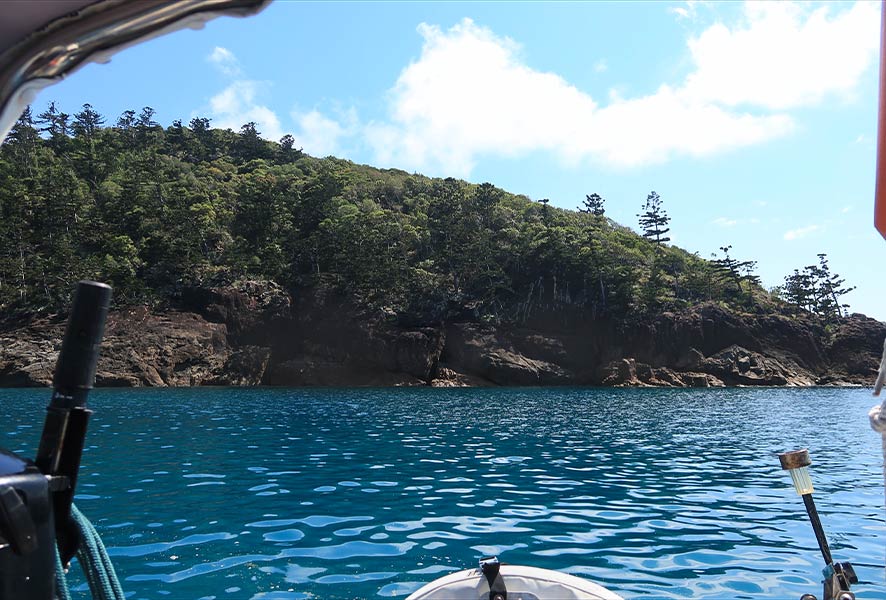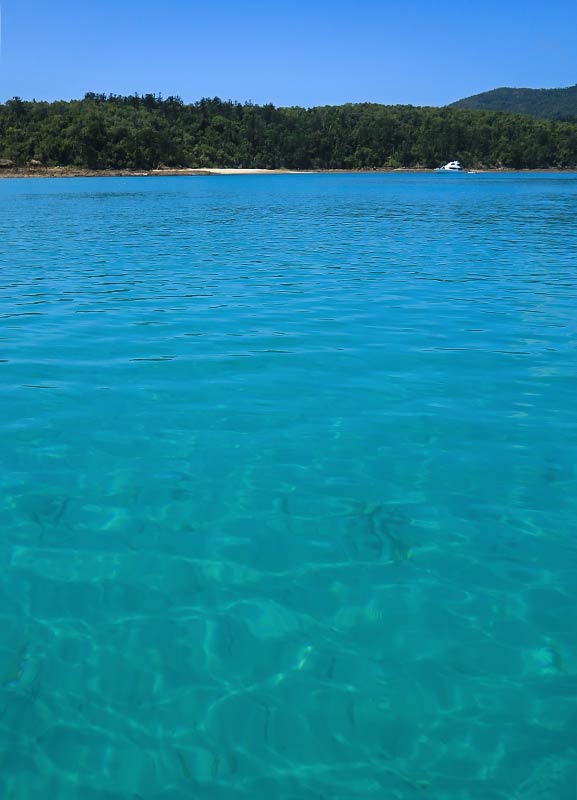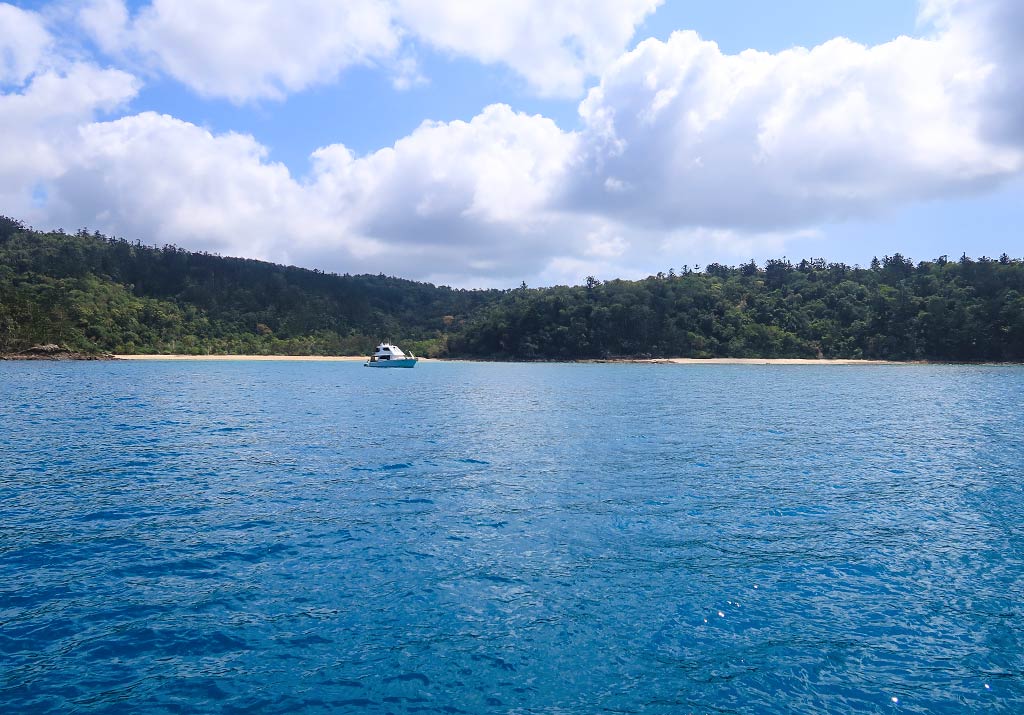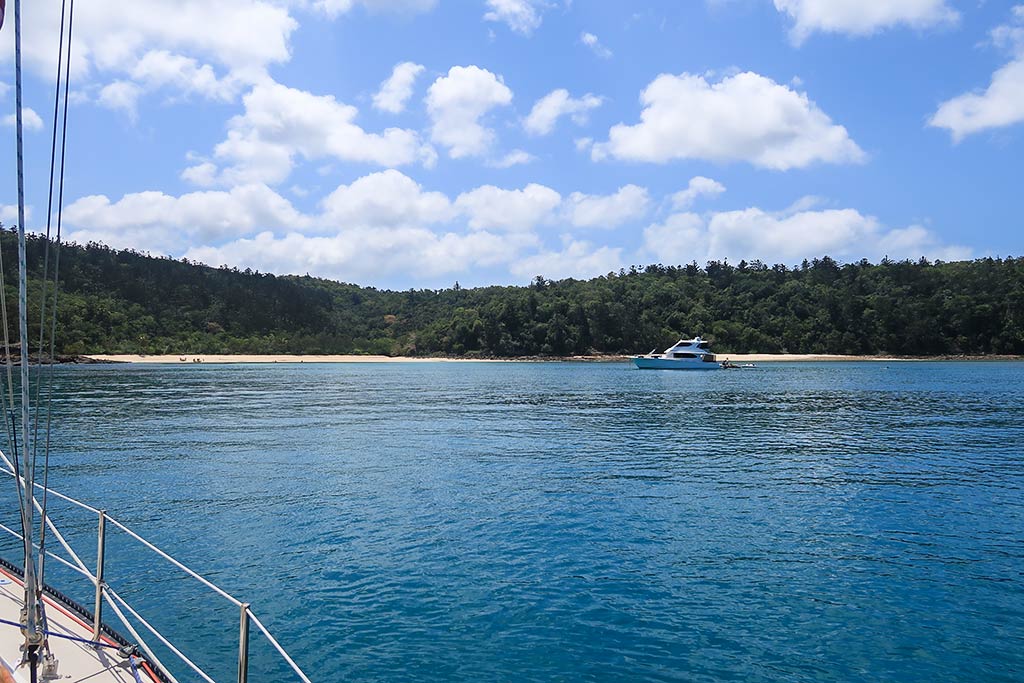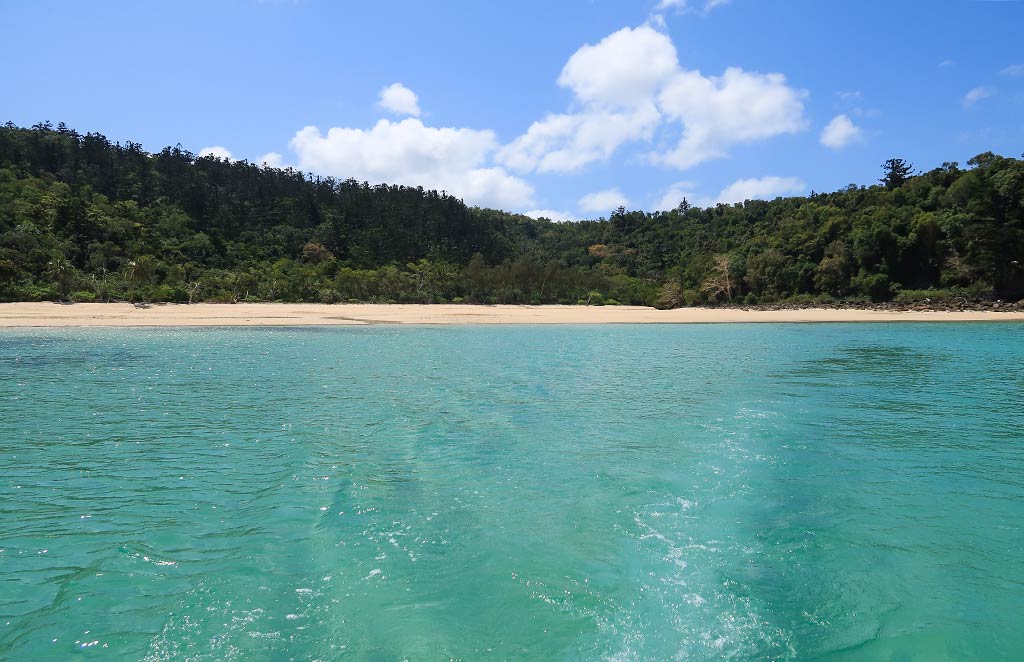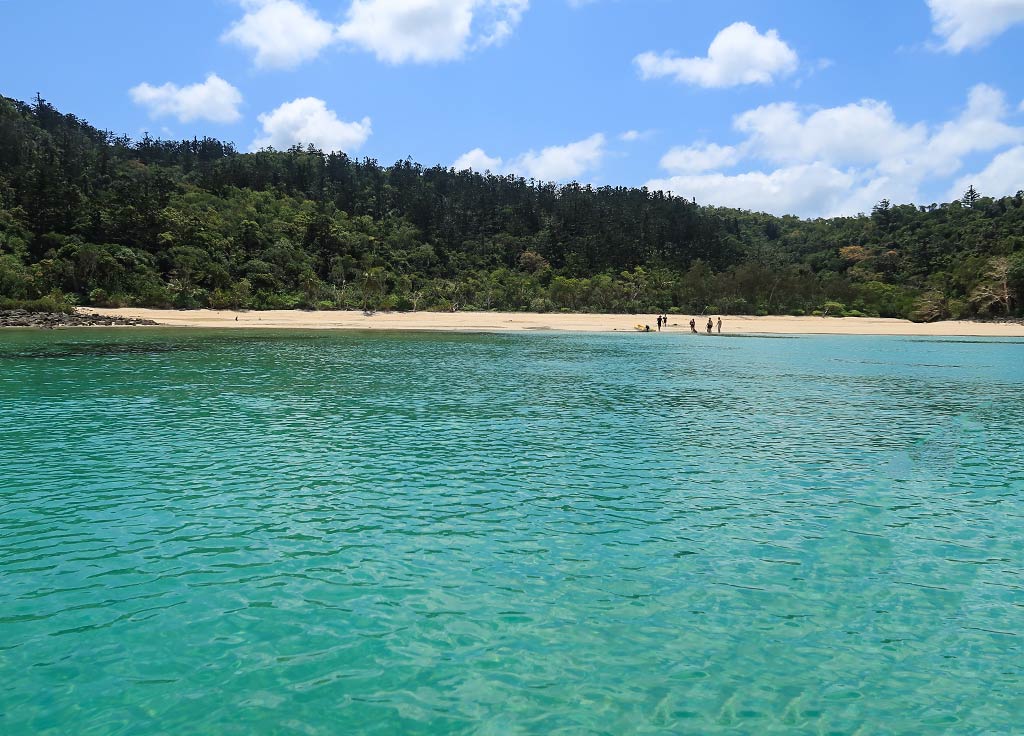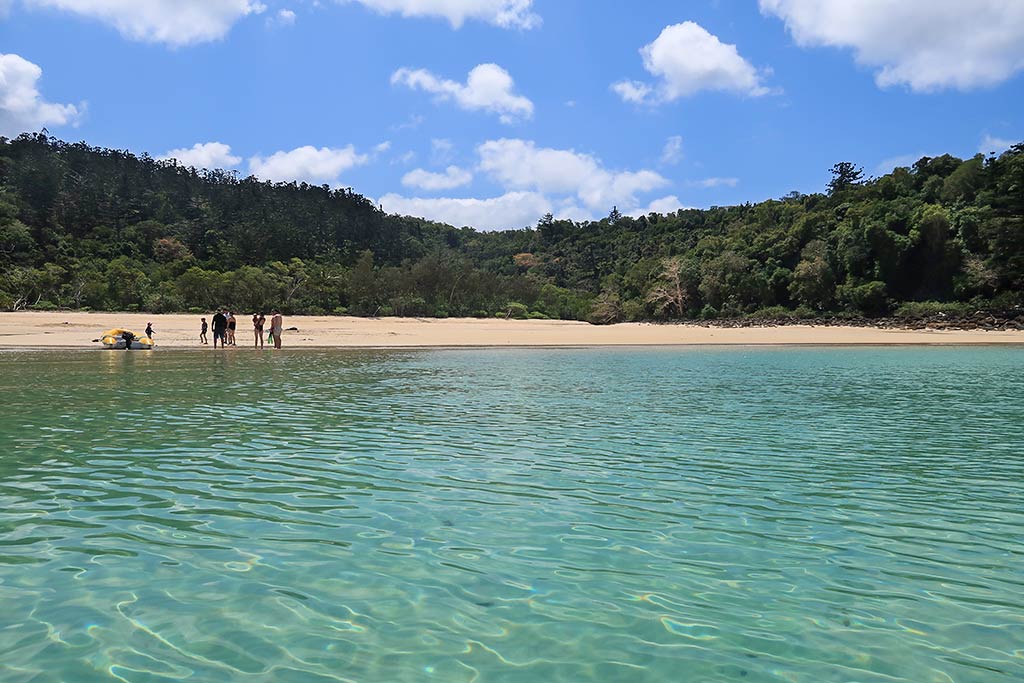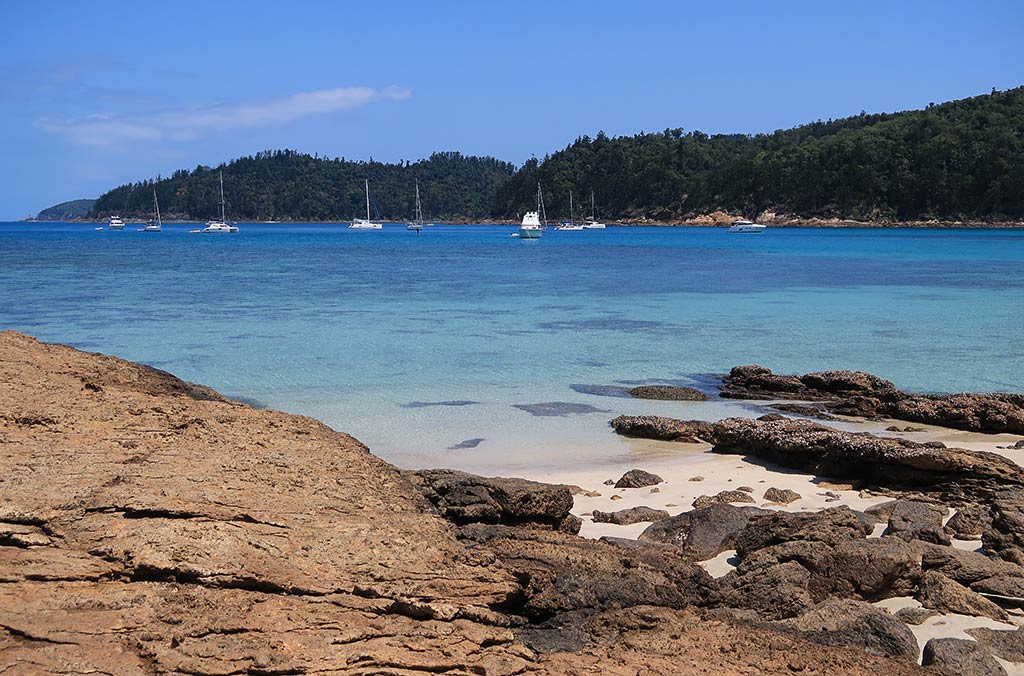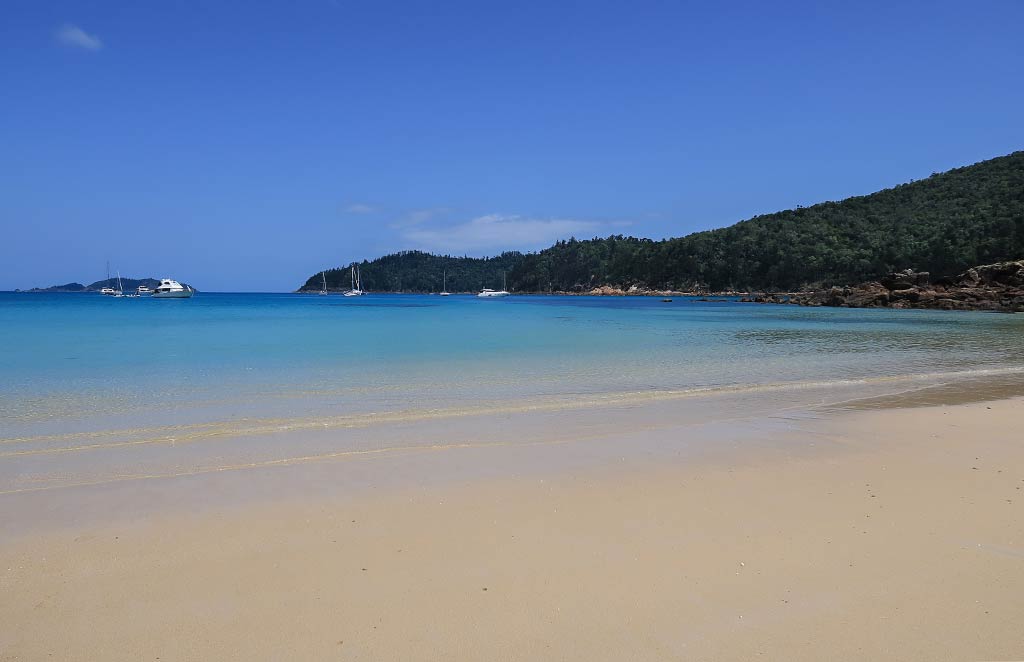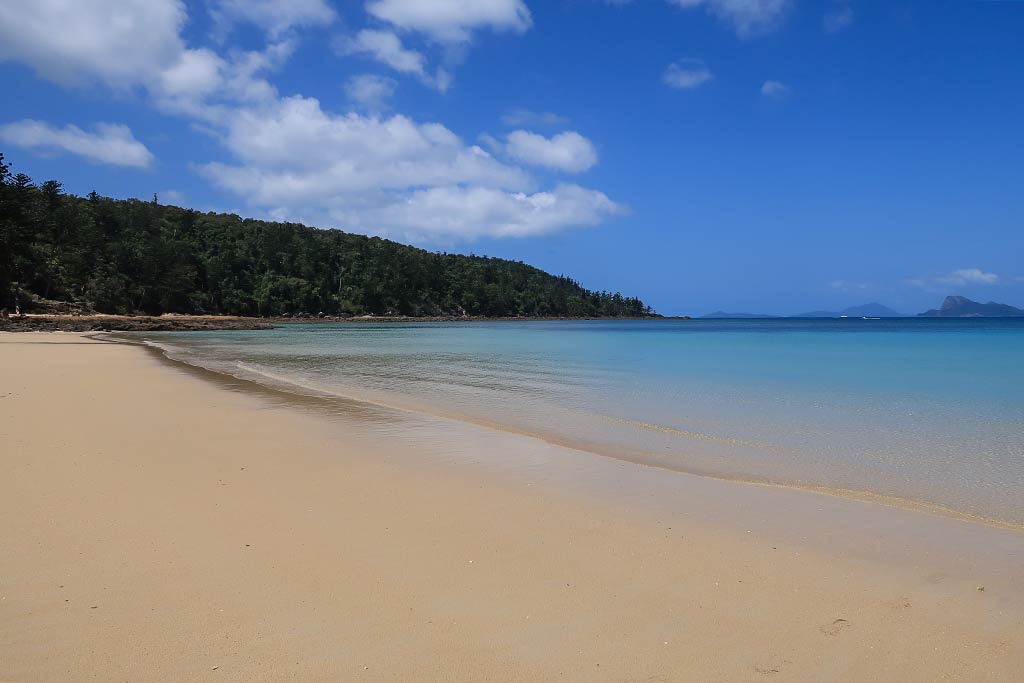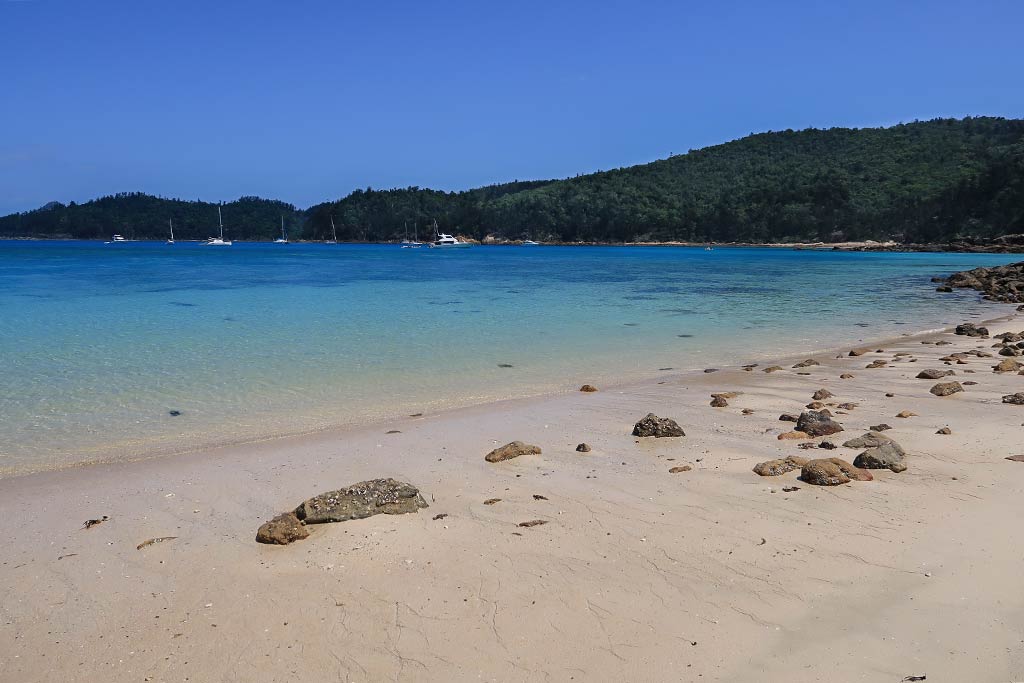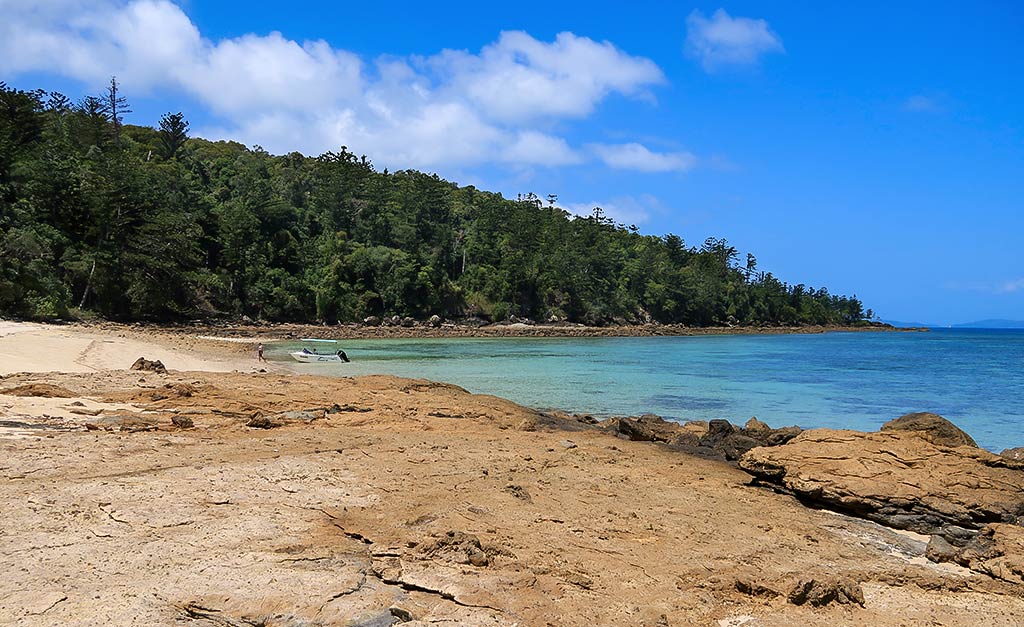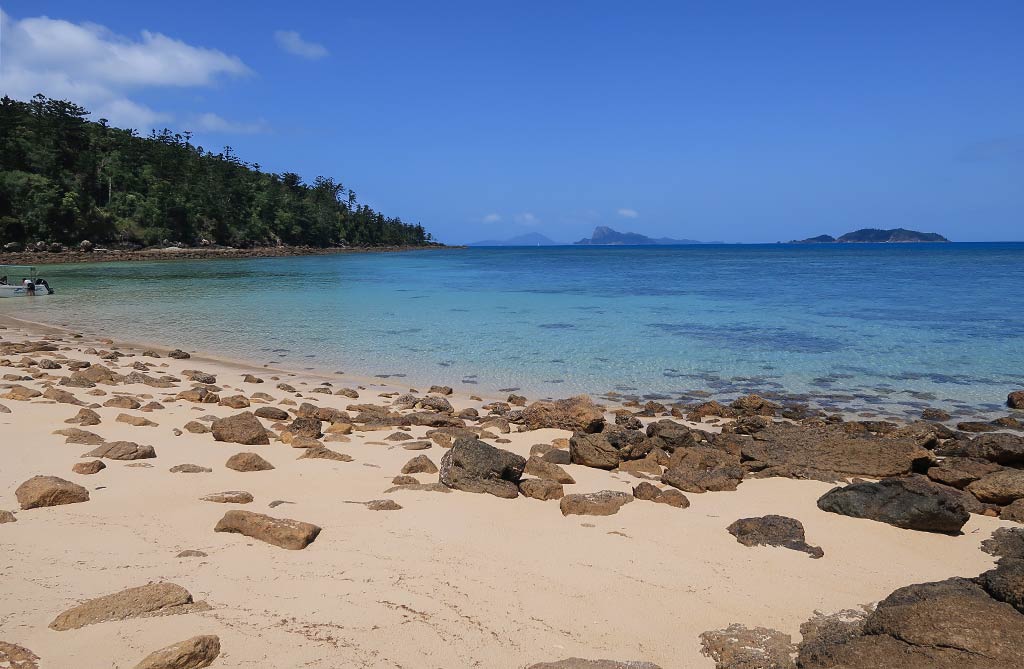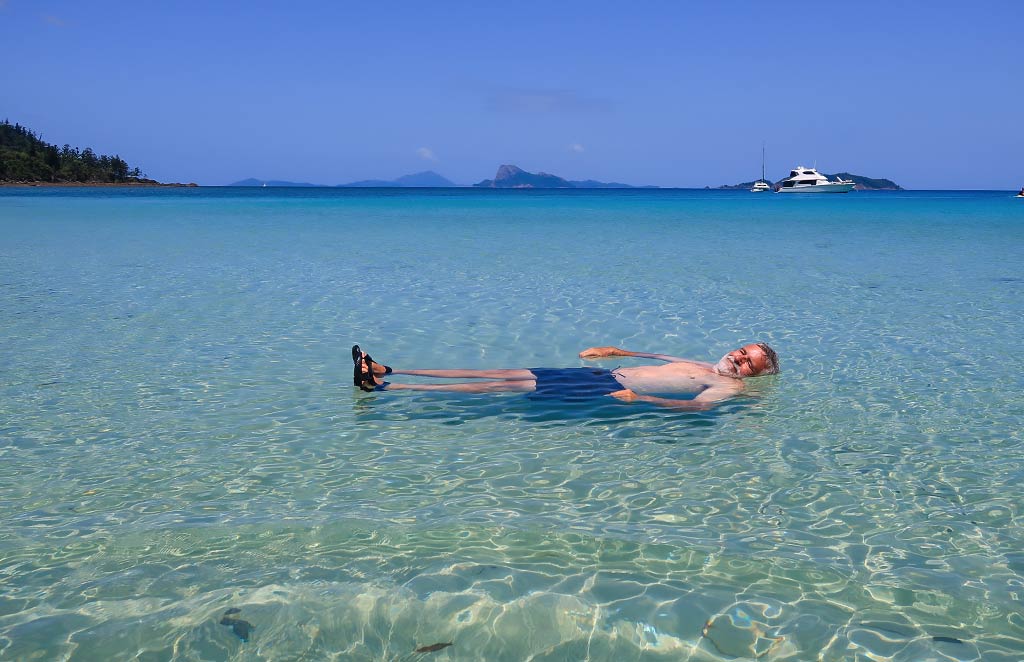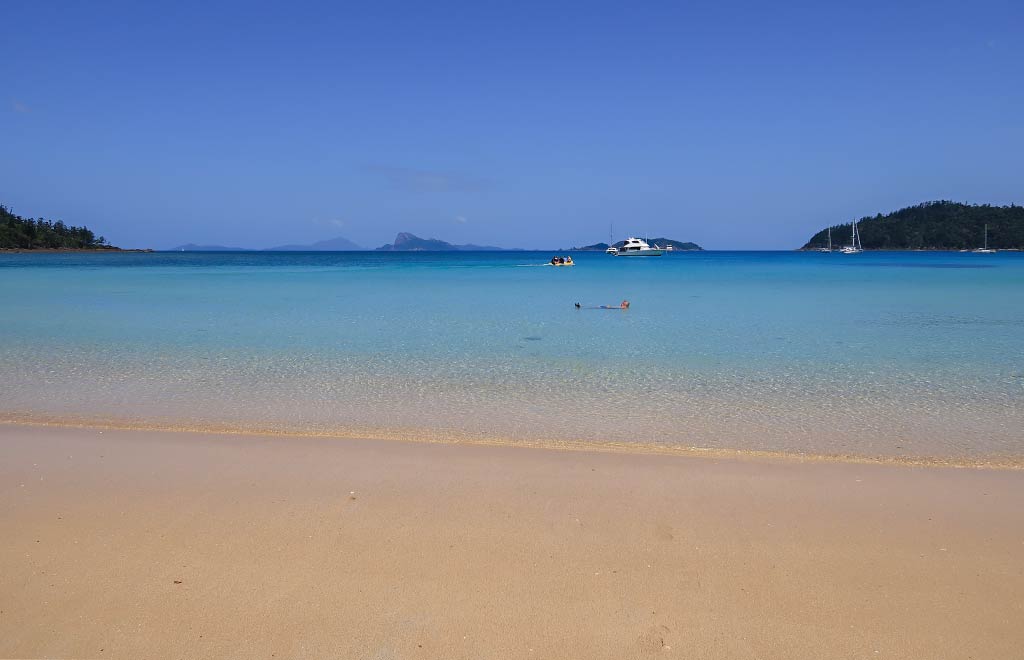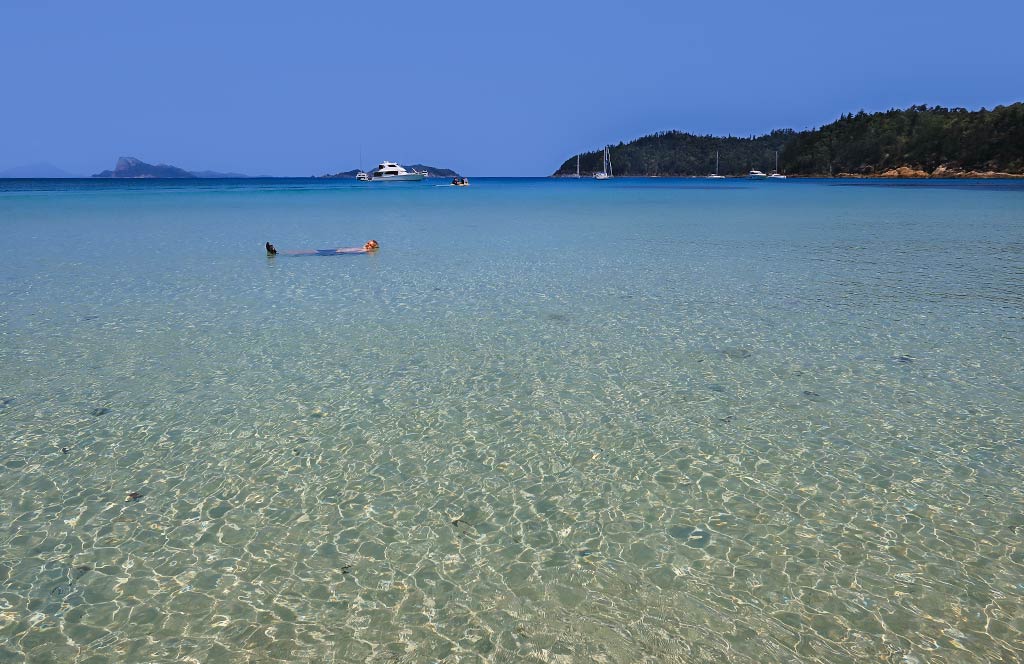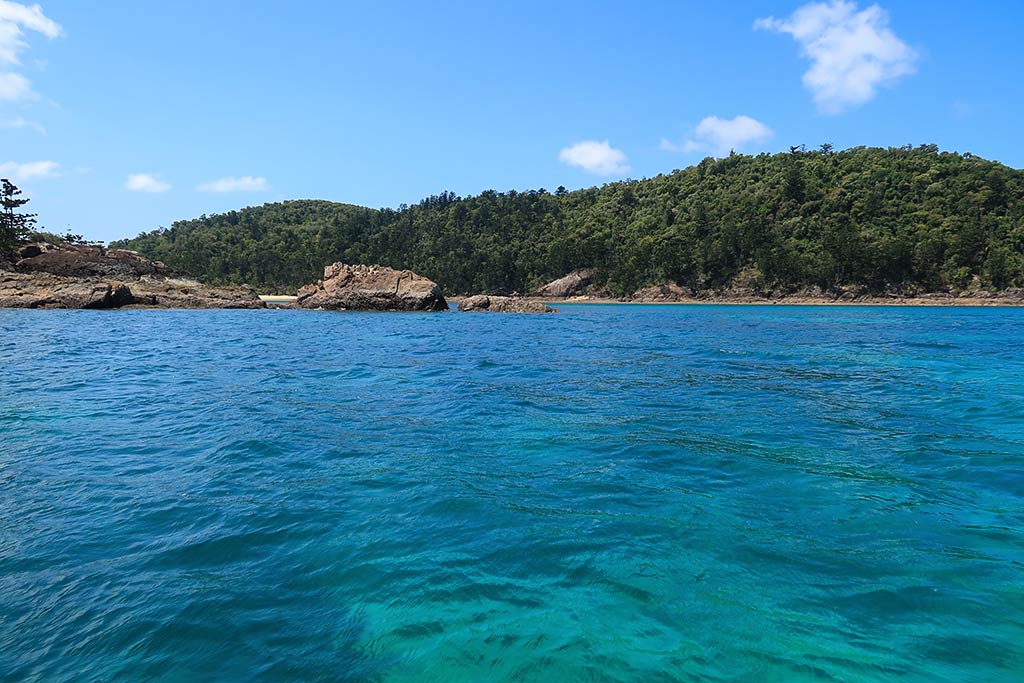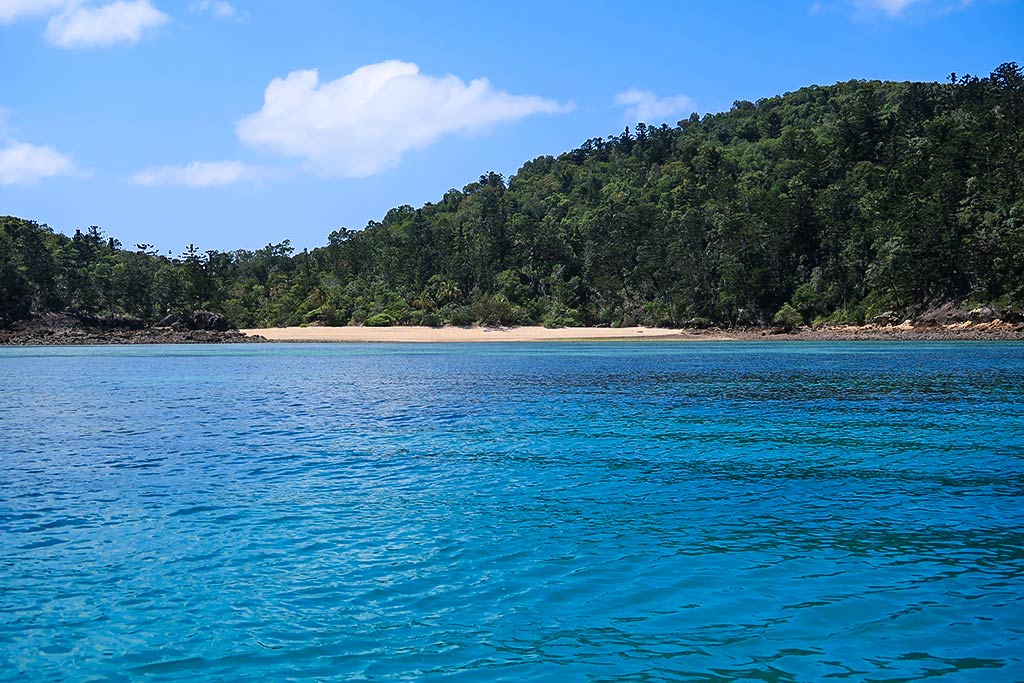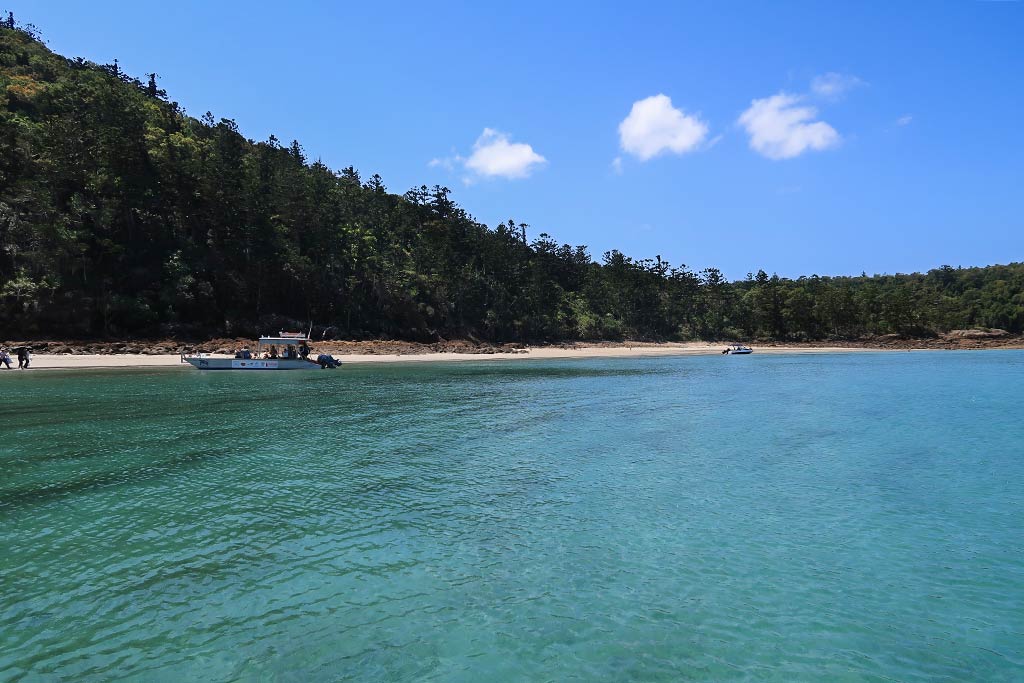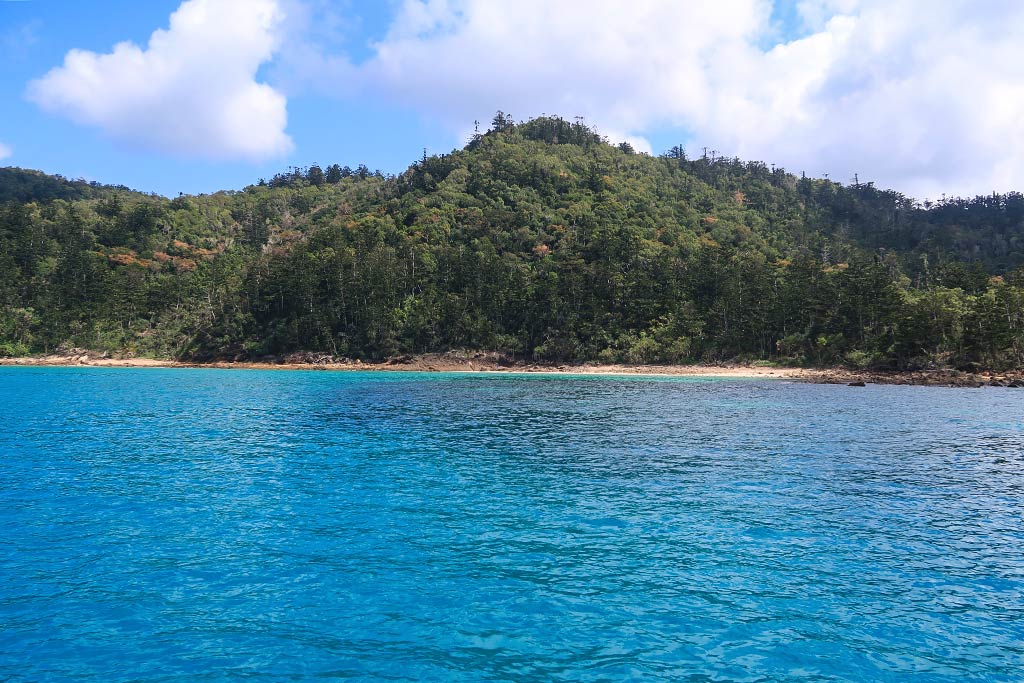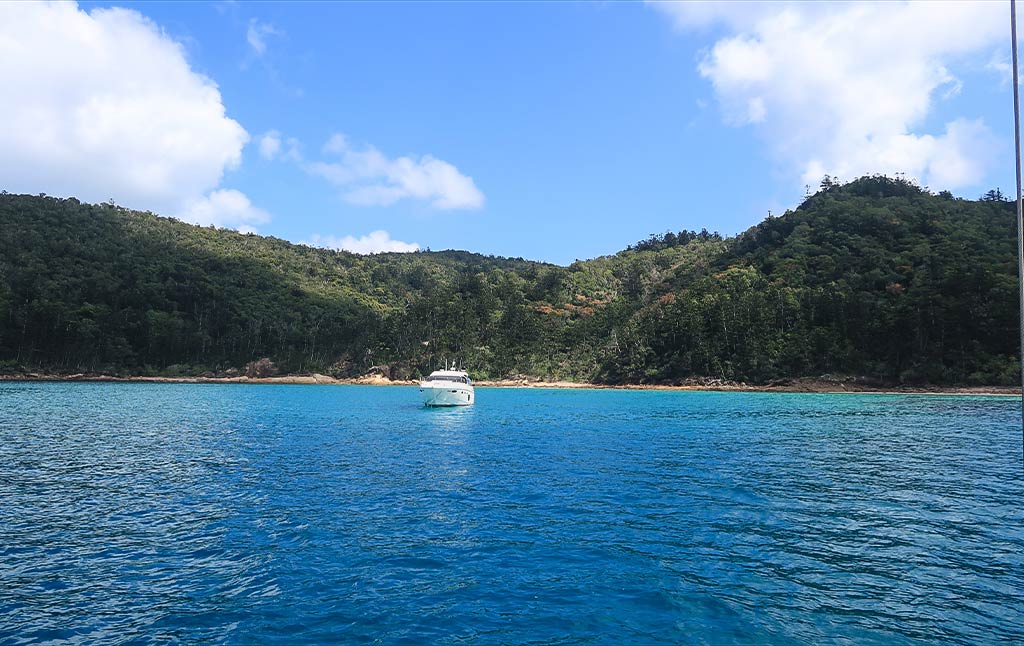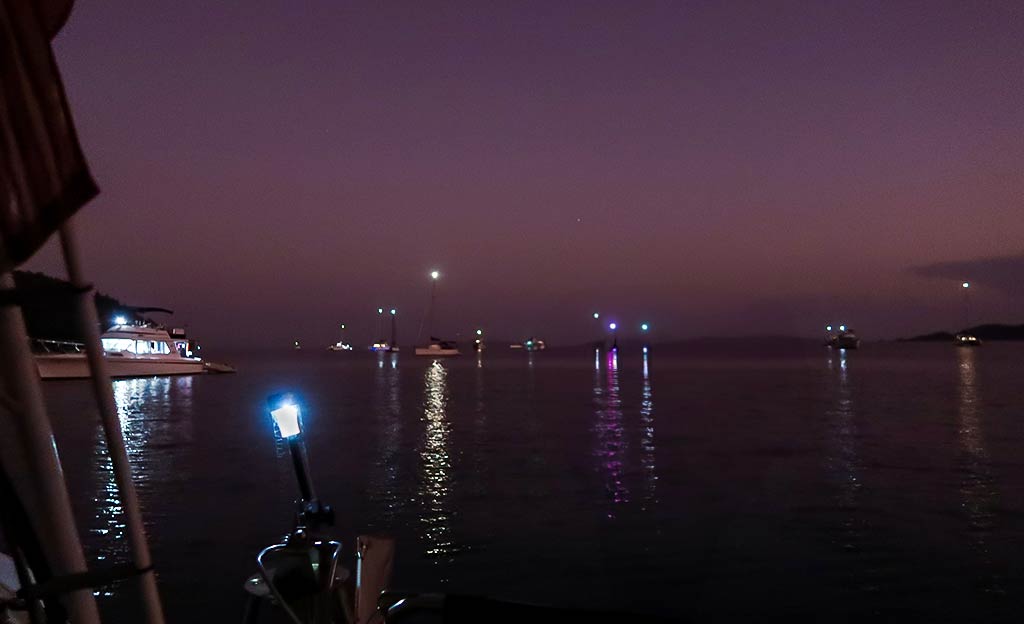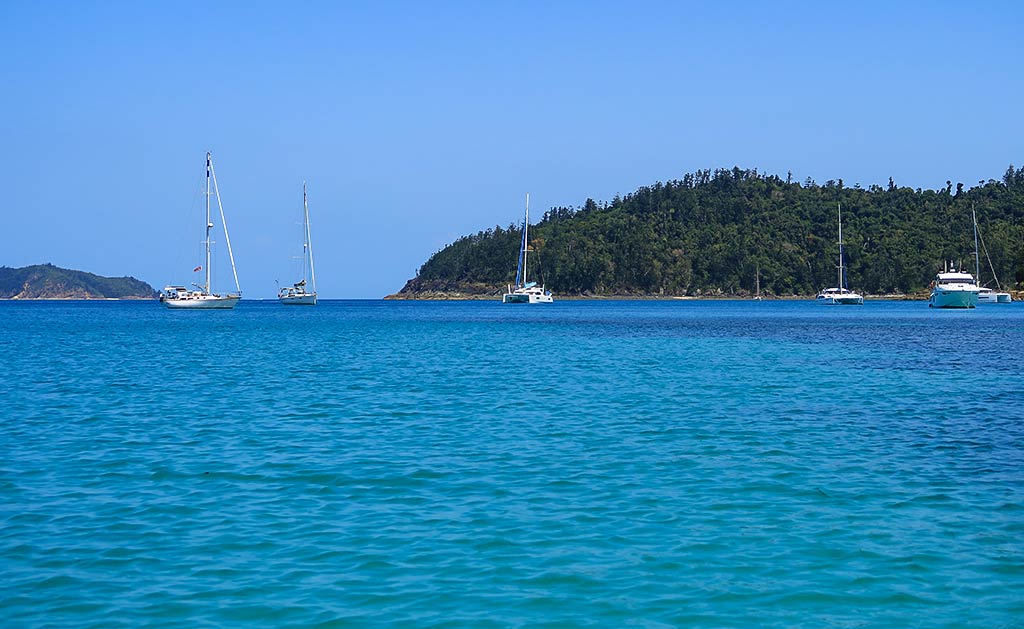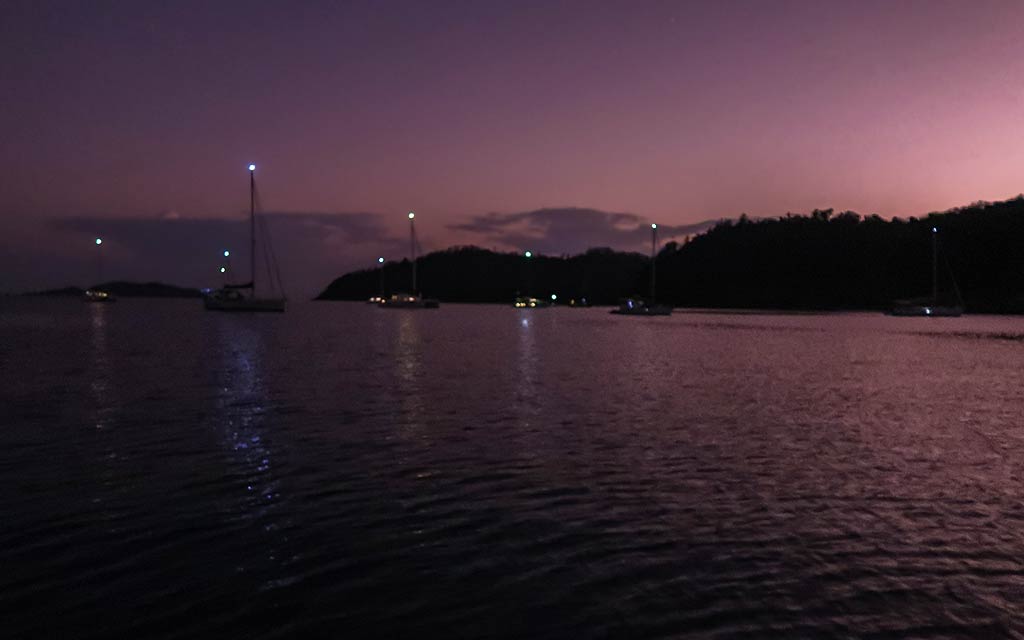Posted on June 11, 2024
about September 22, 2022
What a relief to arrive at Turtle Bay and find it nearly empty! It was late in the morning, after yesterday’s boats had left and before today’s had come in. For a time, it was just us and a couple of power boats. By the end of the day, however, we had plenty of company.
There was a familiar pattern that was already becoming apparent, and that’s the tendency for boats to come and go frequently in island-filled areas like this.
It reminds me of the musical chairs game—everyone gets up and circles the chairs until the music stops, at which point everyone sits down except the person who misses out on a chair. In cruising areas like this, early evening is the equivalent of the music stopping. If the anchorage is full, those who haven’t procured a spot have to go elsewhere.
One notable exception happens in New Zealand during the Christmas holiday period, where locals tend to cheat by anchoring much too closely (the equivalent of sharing a chair). I worried the same would be true in Australia, but from what I’ve observed during our seasons here, Australians practice good boating habits and anchor properly.
We picked a nice spot and dropped the anchor. How lovely it was here. We were surrounded by lush green hills fronted by two white sand beaches, which later became three lovely beaches when another emerged at low tide.
The water under our boat was dark but clear. Near the shore, it took on beautiful hues of bright blue and green, one of the benefits that comes with clear water over white sand. To the south, the horizon was filled with the hilly islands we’d left behind.
There were some coral reefs in the area, but there was no temptation for us to snorkel—we’d wait for the Barrier Reef where we planned to dive.
Apart from the beaches, the shoreline was rocky, the vegetation a combination of leafy trees and pines. A flock of cockatoos alighted from the forest, and we could hear the jungle-soundtrack warbles of kookaburras. As always, crows were making their amusing waa-waa,-waaaaaaaaaa cries. At night, we heard a strange bird that sounded like a chicken with kookaburra gurgle. Prolific birdlife is a big part of the magic of Queensland’s Islands.
Below, a view of Turtle Bay’s shore from our boat.
We wasted no time in getting into the dinghy and heading to the beach. The water just offshore was a beautiful blue-green, in the photos below . . .
We landed on the smooth sand of the biggest beach, then took a walk along the shore. What was striking to me was the soft, dream-like quality to the look of the land, sea and shore, much like we’d seen at our previous stop, Shaw Island. Here, though, the colors in the water were more vivid.
We walked to the area of large flat rocks that divided the two beaches. The next beach was nice but was much rockier than the main beach. I walked onto it to get a few photos, then returned to the first beach, definitely the more appealing of the two.
It was time to cool off in the water, but as I’ve stated before, the waters of the Whitsundays are home to many sharks, including three man-eaters: great whites, tiger sharks, and bull sharks. There is one particular area in the Whitsundays that has been the site of numerous attacks, so now warning signs have been posted there, and everyone is warned not to go in the water at all.
In other areas, visitors are urged to stay alert and never to swim between dusk and dawn, when the sharks are feeding. Beyond that, it’s advised that people swim in clear-water areas. Swimming off an anchored boat, in darker water, is up to the individual.
In Turtle Bay, I noticed that only one person was the water amid the boats, but he had a motorized, hydroplaning surfboard he was riding on. Later in the day a family swam off their swim step, but otherwise most people did the same thing we choose to do—bask in the water just off the beach.
(Note: I’m aware many shark attacks take place in shallow water, but that’s generally near river estuaries, murky water, or water over coral reefs. I can’t claim swimming off this particular beach was risk-free, but it was a calculated risk we were willing to take.)
The water was pleasant, clear, warm yet refreshing, and simply wonderful to float in under a clear blue sky. And look at how blissed out Rich looks!
Feeling relaxed after our swim, we took a dinghy ride around a headland to the neighboring anchorage, a spot called Torres Herald Bay. It’s a small bay and shallow near shore, perfect for a power boat or shallow-draft boat.
On the way back to our boat, we took a detour to where a beach had emerged as the tide got low. And what a nice beach it was! There were a couple of visiting tour boats that must time their visits for low tide. Turtle Bay now had three beaches! Below, photos of the shore at high tide followed by photos of the beach that emerges during low tide. It’s quite a contrast!
As the day went on, the anchorage filled up, but it never felt crowded. Below are photos of the anchorage taken during the day and after dark.
From what we could tell, most of the boats around us had been chartered. I was learning that just because the cruising season was ending, it didn’t mean there wouldn’t be plenty of other boats. We were now entering peak season for yacht charters, and it showed. I just hoped the anchorages would always have room for us.
With the good weather forecast to continue, we planned to head four miles east to Chance Bay the following morning. Like Turtle Bay, it would have a white sand beach. But the main draw was a hiking path through bush forest that would take us to the biggest attraction in the Whitsundays, Whitehaven Beach! –Cyndi
